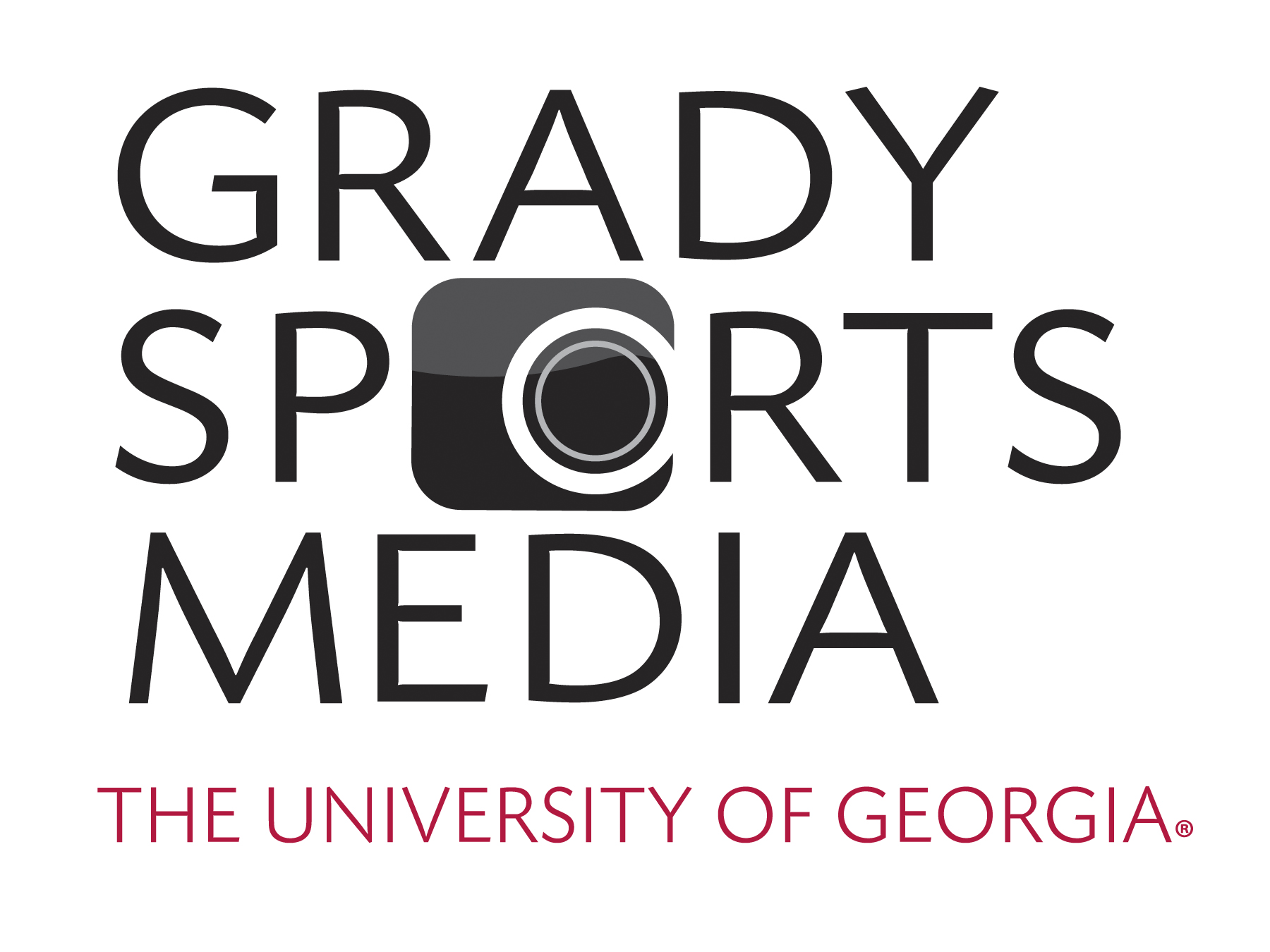
Grady College established the new sports journalism program, which would be headed by professor Vicki Michaelis. The program directs the college’s sports media initiative and is the first of its kind among universities in the Southeastern Conference.
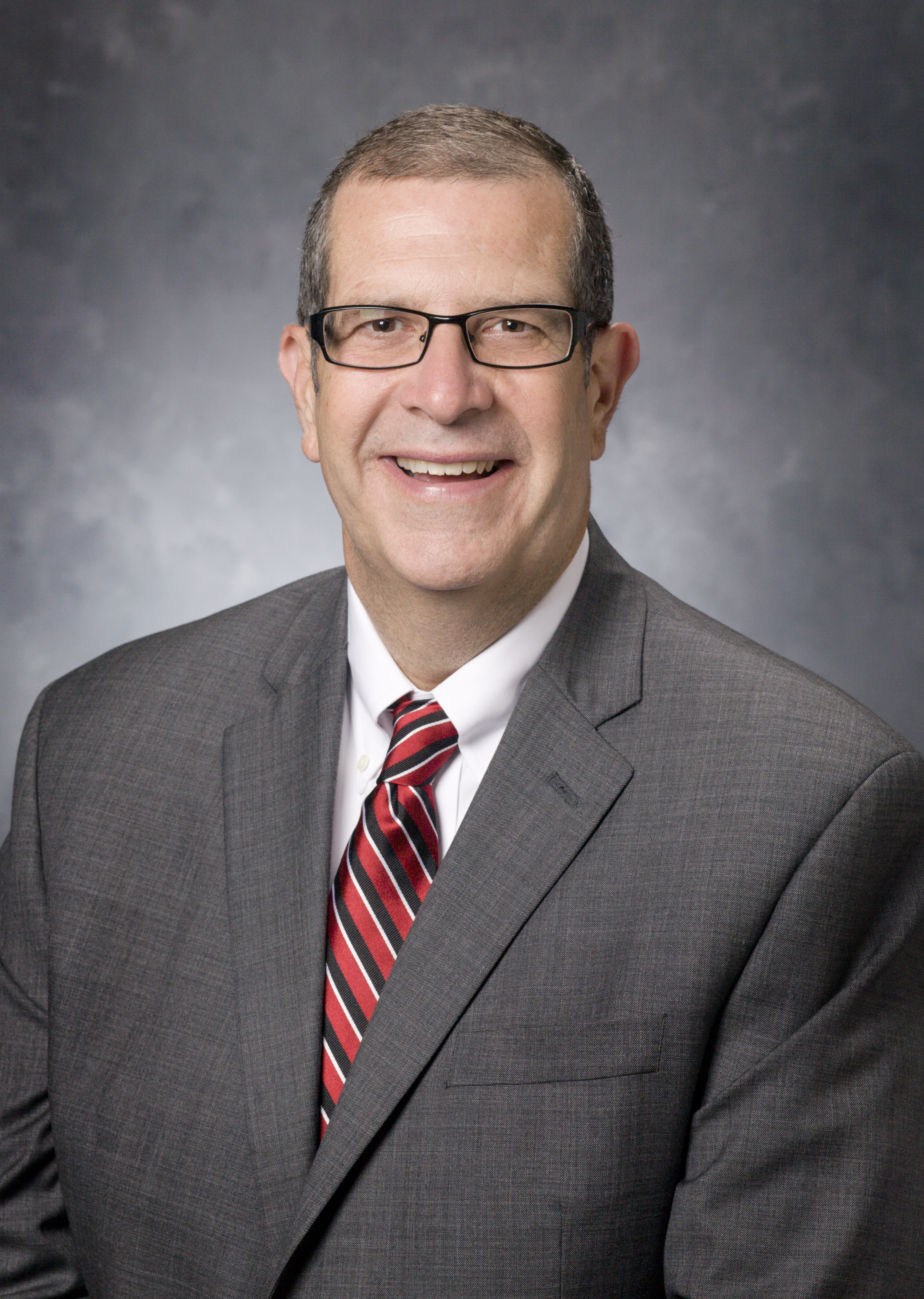
Charles Davis was named the new Dean of Grady College. Dean Davis places focus on technical skills and creating “digital hybrid athletes” that do more than just write.

John Soloski served as the dean of Grady College — the fifth dean in the school’s history.
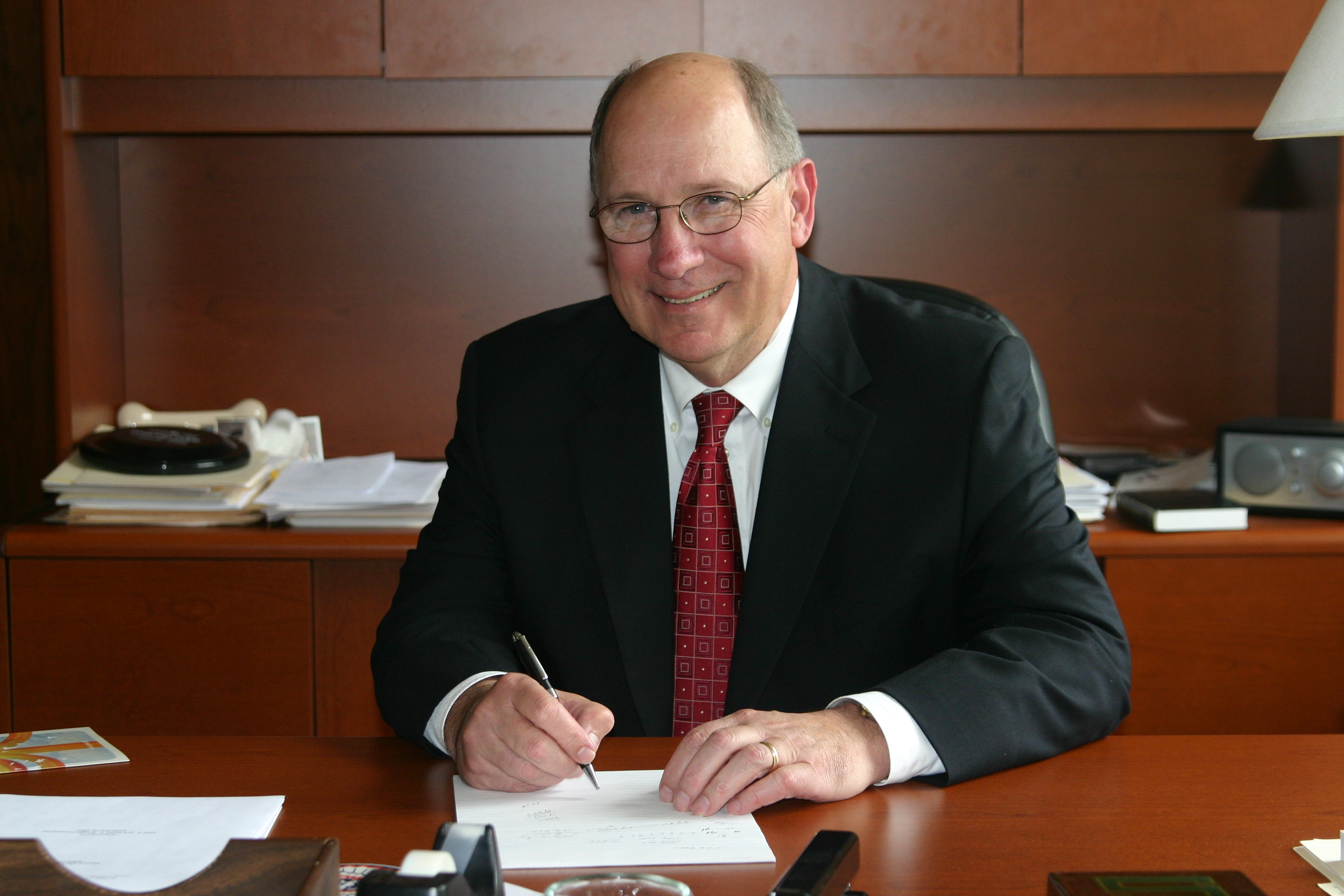
Dean Clark serves Grady College as the dean, expanding the faculty and starting planning for the Grady 100 Centennial.
Grady College added the McGill Symposium to bring together students, faculty and leading journalists to consider what journalistic courage means and how it is exemplified by reporters and editors. The purpose is to advance journalistic courage.
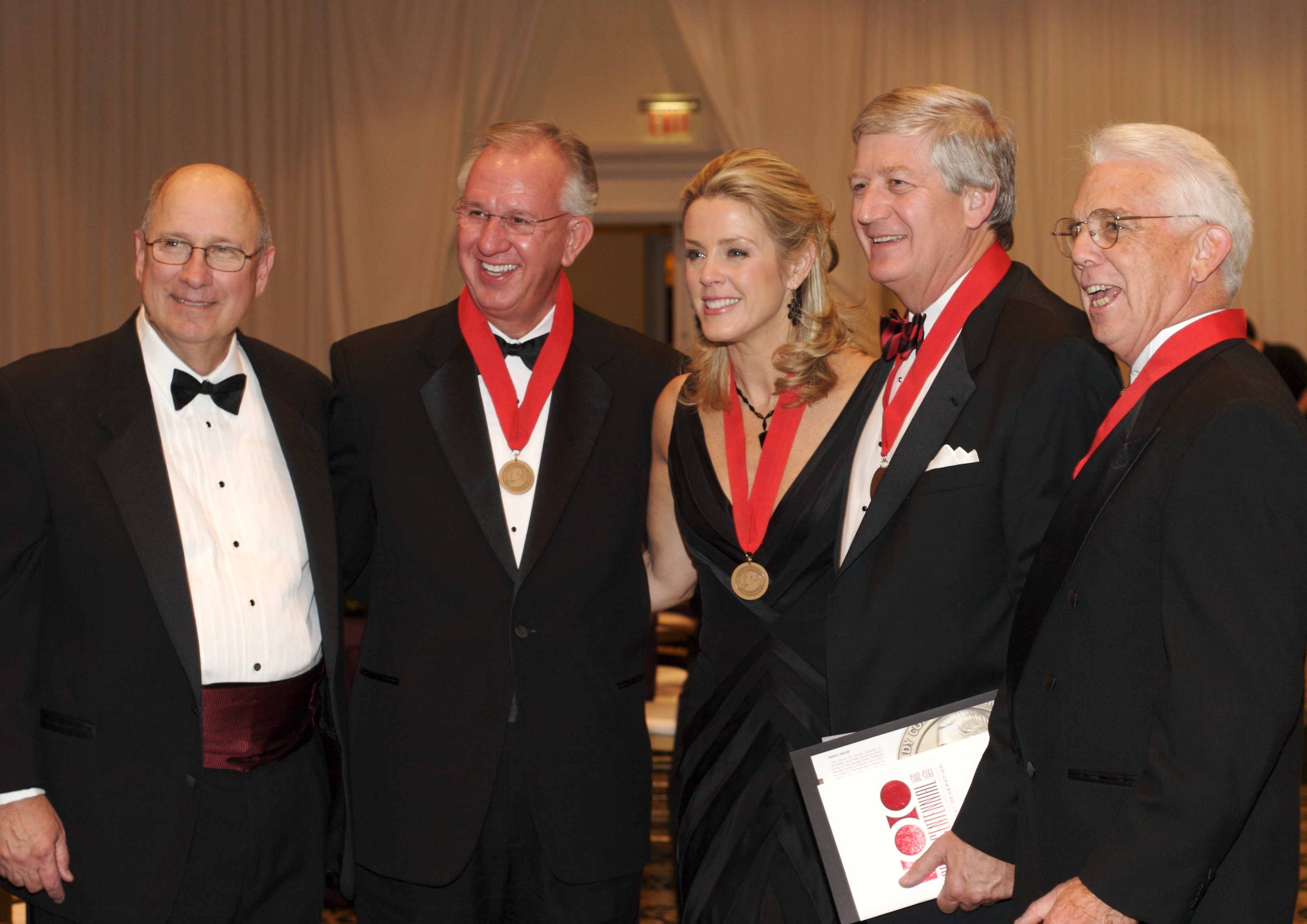
The inaugural class of The Grady Fellowship is announced recognizing Grady alumni and friends for their accomplishments, friendship and service.
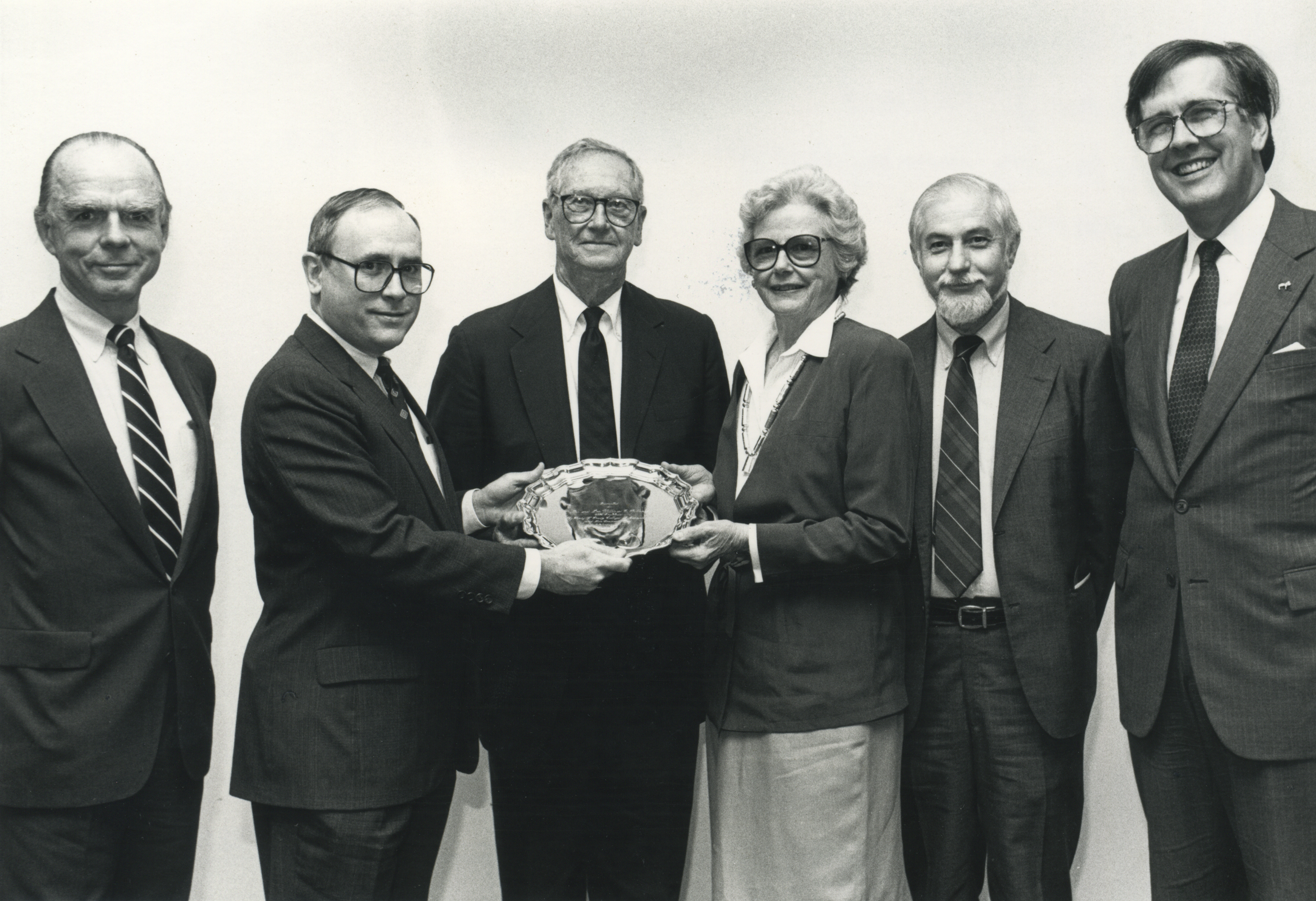
James M. Cox, Jr. Institute for Journalism Newspaper Management Studies is established. In 2014, the name would change to Cox Institute for Journalism Innovation, Management and Leadership.
Make something work, then make it work better. The New Media Institute was founded and explores the critical, commercial and creative dimensions of innovative digital media technology.
The student newspaper The Red & Black went independent from Grady School after the student management and the Board of Student Communications wanted to separate the two. Independence was not universally embraced, but The Red & Black still thrives at 540 Baxter Street.
Ph.D. program established
Dean Drewry dies (AJC called him “the most important figure in Georgia journalism since Henry W. Grady.”)
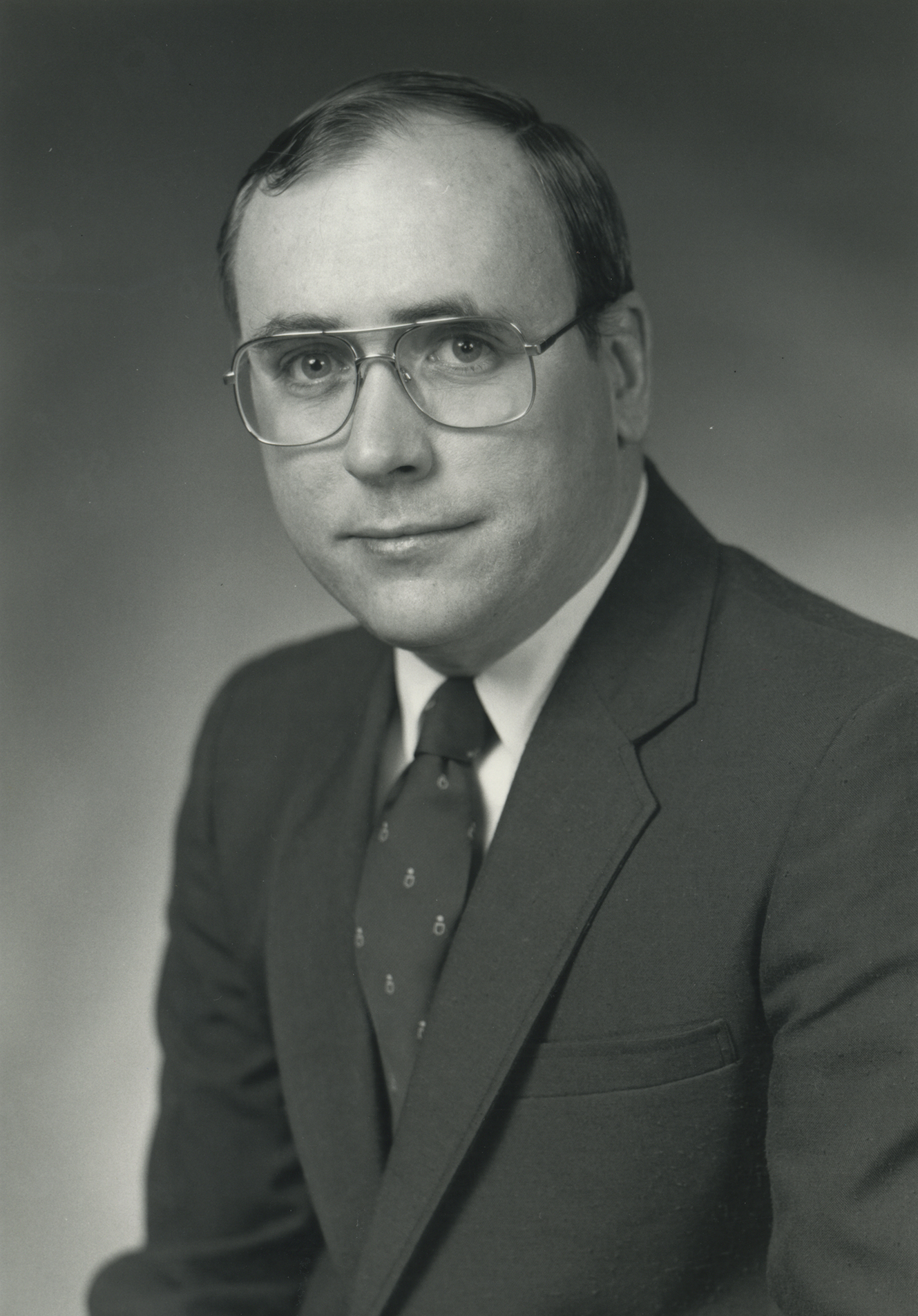
J. Thomas Russell served as Dean of Grady College. Since starting work at UGA in 1967, he saw the Grady College grow from three classrooms equipped with manual typewriters in the Commerce-Journalism Building to the journalism building used for classes today.
The James M. Cox, Jr. Center for International Mass Communication Training and Research began operations. The Center has conducted more than 125 training programs involving countries all over the world and published more than 15 research and technical reports
Grady School of Journalism and Mass Communication becomes Grady College of Journalism and Mass Communication signifying a full range of degree programs.
First Awards Convocation held
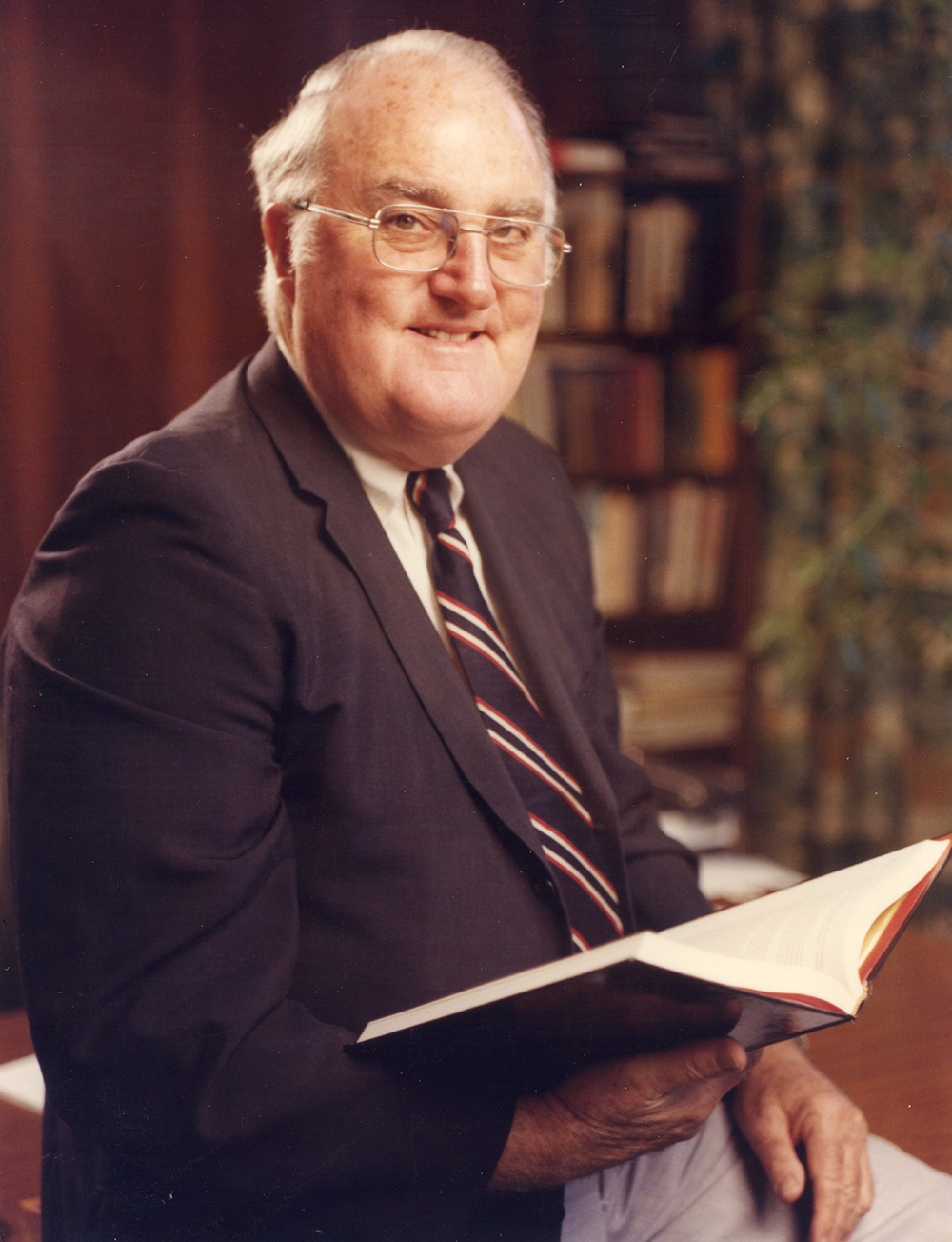
Scott M. Cutlip served as the dean of Grady College. He was the co-author of one of the best-selling public relations textbooks ”Effective Public Relations’ and is credited with helping establish public relations as a field of academic study.
Regents approved adding Mass Communication to school’s name
Ralph McGill Lecture established
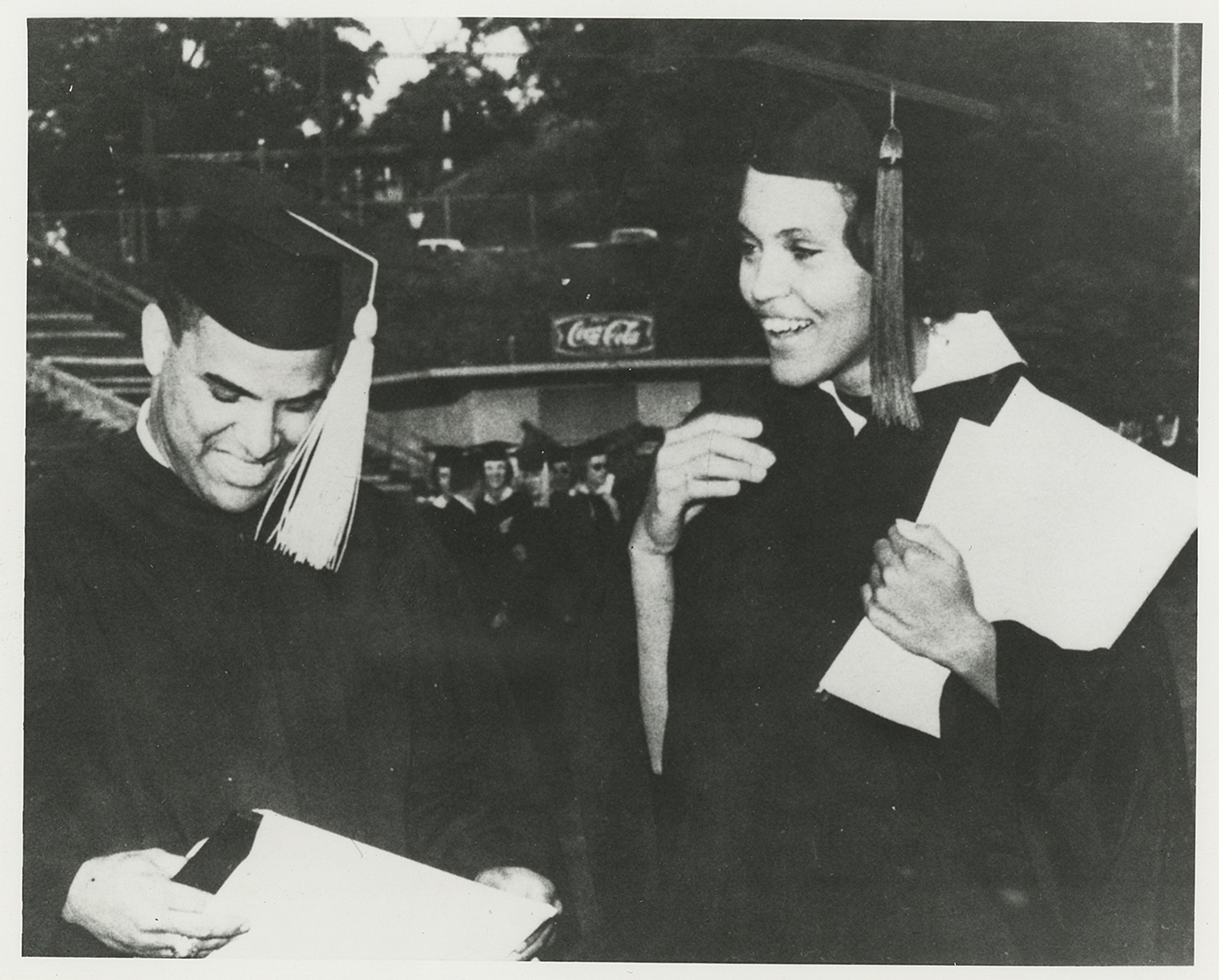
Charlayne Hunter (now Hunter-Gault) and Hamilton Holmes became the first two African-American students to enroll in the University of Georgia. They graduated in 1963, Hunter with a degree in journalism. (Photo from the Hargrett Rare Book and Manuscript Library/University of Georgia Libraries)
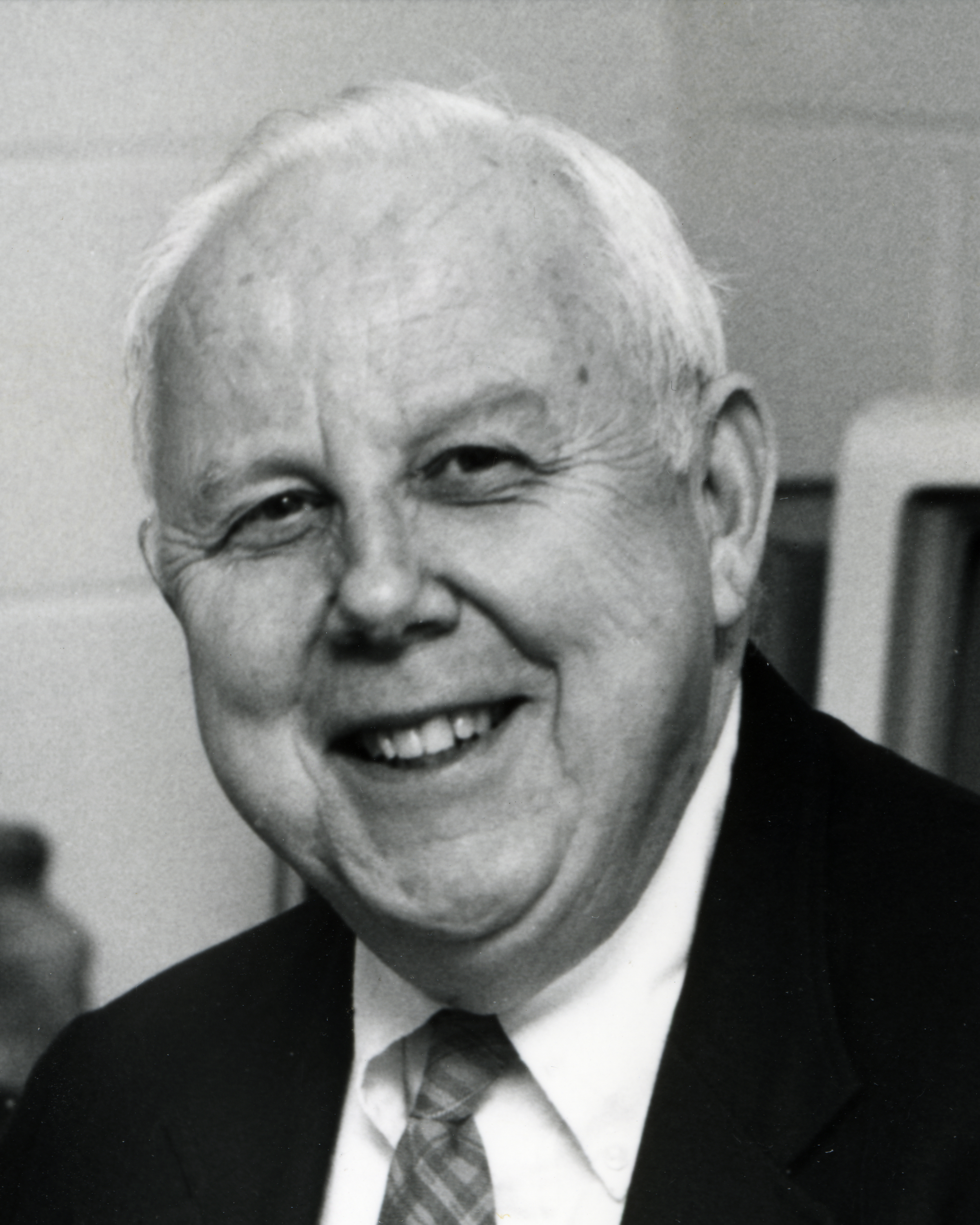
Worth McDougald, the longest-serving director of the Peabody Awards to date, serveds as director.

Warren K. Agee became the dean of Grady School in 1969 succeeding long-time dean John E. Drewry. He quadrupled the size of school’s photographic laboratories, developed a graphics laboratory and implemented major curriculum changes. He stepped down in 1975. (Photo from the Hargrett Rare Book and Manuscript Library/University of Georgia Libraries)
Classes — News-Editorial, Advertising-PR, Radio-TV, Journalistic-Literary Appreciation, Editorial-Secretarial sequence
208 enrollment (127 men and 81 women)
Bill Shipp, Walter “Bucky” Lindy and Priscilla Arnold editorials in Red & Black: Created Equal (pg. 68)
Public relations added to the sequence by Hamilton Frazier Moore.
241 were enrolled in Grady School. Of the 69 who graduated that year, 42 were women. (pg. 38)
Hallie Carolyn McKenzie graduates and becomes an award-winning photo-journalist, first with the Atlanta Constitution and later with Coca-Cola. Following graduation, she would meet Donnel Earl Carter (ABJ ’38) and they would marry. Don and Carolyn created the Chair for Journalism Excellence and have pledged the largest single gift to the college.
On August 7, 1940, Dean Drewry gave credit for the suggestion the UGA should administer a similar award to the Pulitzer for radio. He suggested that the broadcasting awards bear the name George Foster Peabody, a distinguished patron and life trustee of UGA.
March 21, 1941, The George Foster Peabody Awards are first presented to six distinguished radio winners at the Commodore Hotel in NY. The list includes CBS Radio, NBC Radio, International Short-wave Broadcasters and a personal award for Norman Corwin. From the beginning, college faculty and students actively supported the work of the Board.
W. Stanford Smith graduates later to become executive officer of the American Newspaper Publishers Assoc. (pg. 52)
Dan Magill, Jr., legendary tennis coach and father of intercollegiate sports, and Jim Tate, pioneer in corporate communications at AGL, graduates (pg. 43)
30 graduates, including Willis Johnson (storyteller for banking), Jess Outlar (sports journalist) and Eugene Patterson (journalist following WWII.) (pg. 45)
22 graduates – 2 males
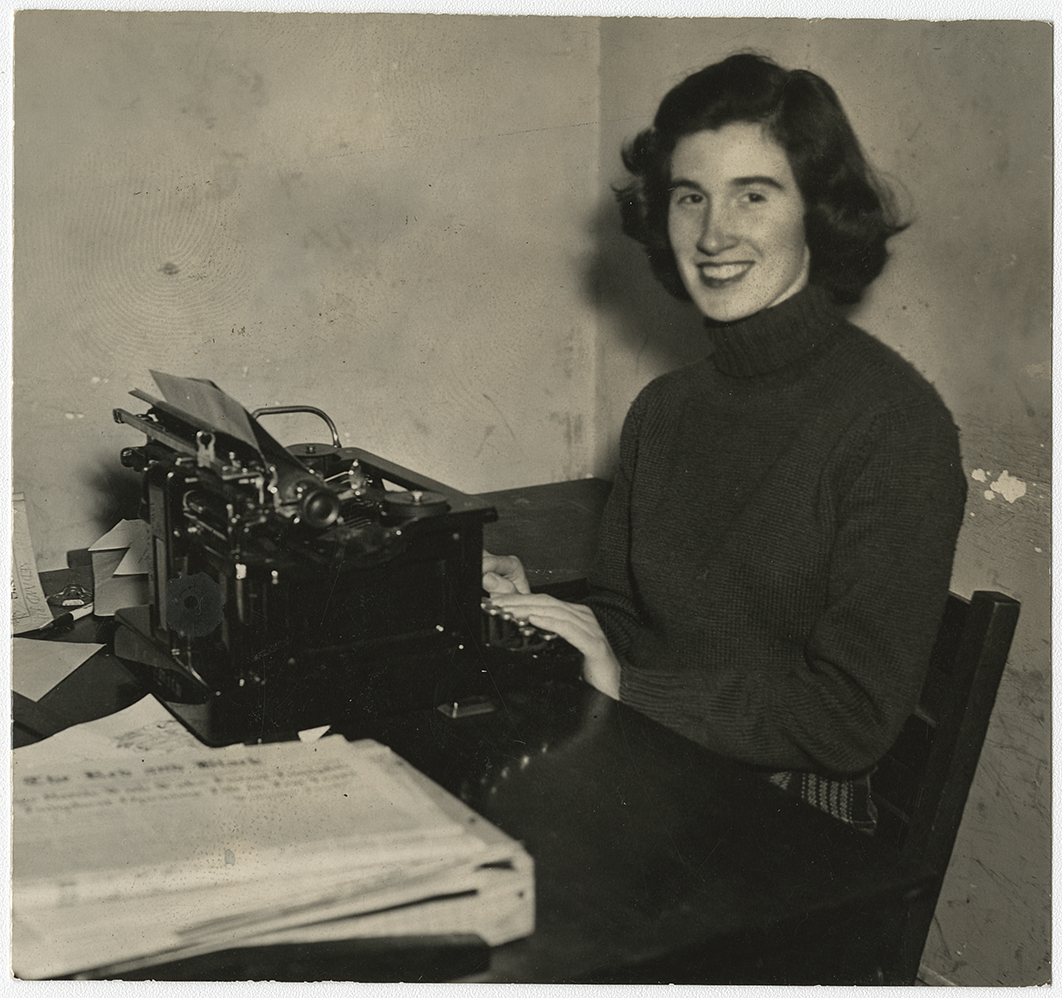
Margaret Childs first female editor of the Red & Black. (Photo from the Hargrett Rare Book and Manuscript Library/University of Georgia Libraries)
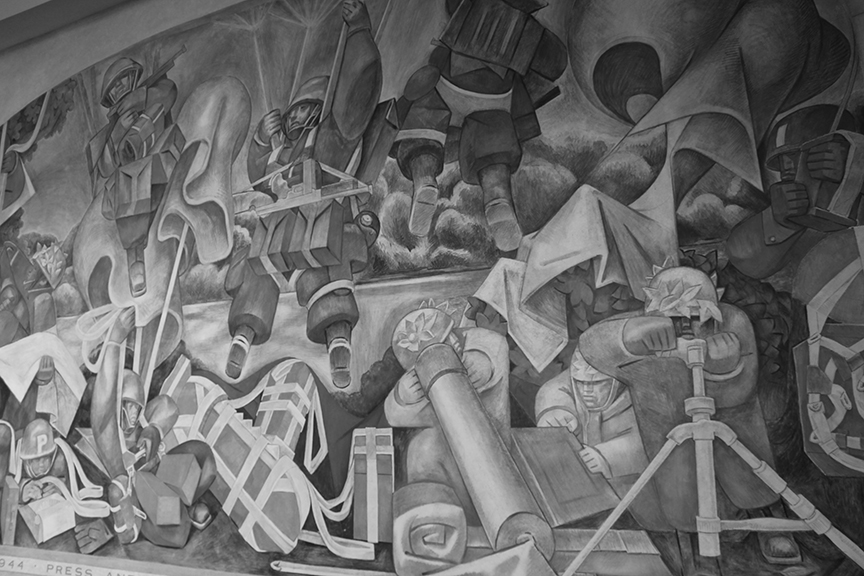
Dedication of Jean Charlot mural (one of 5 in the CJ Building).
23 graduates incl. Aubrey Richard Morris from WSB (pg. 45)
Georgia Radio/TV Institute founded
The Peabody Awards adds television shows to its list of recipients
122 graduates incl. Claude Williams who won a Silver Star and Purple Heart and created Athens Daily News
The creation of the nation’s first internship program (pg. 27)
The Georgia Press Association established a Hall of Fame and made Grady School its official home (pg. 27). The first inductee was Henry W. Grady.
First graduate course at Grady: advertising (pg. 59)
Drewry organizes the Georgia Collegiate Press Association
Lessie Bailey Smithgall graduates. She would introduce Lambdin Kay and John Drewry, an introduction that resulted in the creation of the Peabody Awards.
Marion Tyus Butler graduates (director of the Alumni Assoc. in the mid-50s)
In 1937, Professor Willett M. Kempten conducted the first European travel seminar, where leading American newspapers and associations, as well as foreign news services and government cooperated.
In the late 1930s, the leaders of Grady College realized a need to train students to become young professionals. Leaders created The Internship Plan, in which prospective journalists worked on getting experience in newspaper and journalistic careers following their junior years.
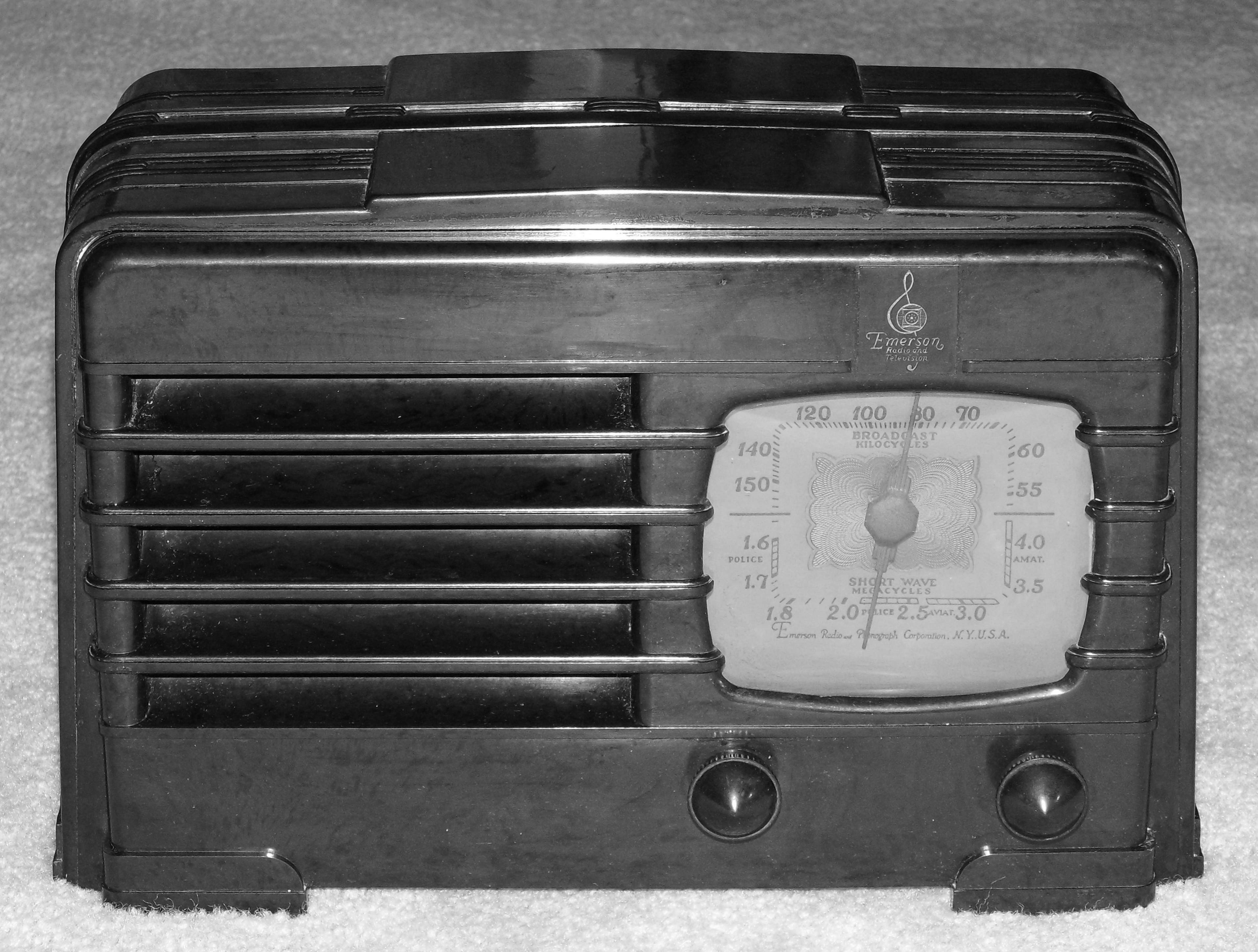
Grady College offers instruction in radio (pg. 27)
Master of Arts degree authorized
Trying to address the fact that Columbia University, home of the Pulitzer Prize, does not accept electronic (radio) entries, Lambdin Kay, public service director for WSB, calls John Drewy to see what they can do about it. The result is the creation of the Peabody Awards.
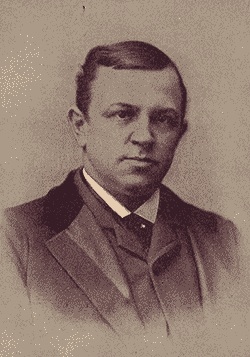
On June 12, 1921, the Board of Trustees suggested Professor Sanford change the name of the School and since that time it has been the Henry W. Grady School of Journalism in honor of the great Georgia journalist who was a UGA graduate in 1868.
Steadman forms the Southern Conference, later changed to the Southeastern Conference in 1932.
First graduate of Grady School of Journalism: Lamar Jefferson Trotti from Decatur (would go on to produce a major motion picture everyone year from 1932 to 1952 for 20th Century Fox including Cheaper by the Dozen, Young Mister Lincoln, and I’d Climb the Highest Mountain. He won an Oscar in 1945)
John Drewry becomes the second graduate of Grady College.
In 1922, a second professor was added to Grady School. John Eldridge Drewry was named the Director of Grady School in 1932 and went on to be the Dean in 1940. He served for 37 years as Director or Dean. (pg. 19)
The first major gift to the college is donated — a Mergenthaler Linotype machine. (pg. 29)
Drewry organized the first press bureau for UGA (pg. 16)
On March 5, 1927, Grady School sent a copy of its petition for membership in Sigma Delta Chi, an honorary journalistic fraternity within the Society of Professional Journalists, to the Cornell chapter.
In 1928, the Commerce-Journalism Building was established and became the offices of The Red & Black. Commerce-Journalism was later renamed to Brooks Hall.
Benjamin Hill Hardy, Jr. graduates. He would later write the speech that would become Truman’s “Four Points Doctrine,” the strategy for the Cold War that lay ahead. The Kappa Tau Alpha journalism honorary society chapter was named after Hardy in 1954 (pg. 24)
Georgia Press Institute founded (first held at UGA in 1929)
Enrollment at Grady College was nearly 70 students. (page 17) 20 women graduated in the 20s with Bachelor of Arts in Journalism degrees (page 22)
Robert Sherrod graduates from Grady. He was a well-known WWII war correspondent who eventually became editor of The Saturday Evening Post (pg. 23)
Approximately 500 students enrolled at UGA
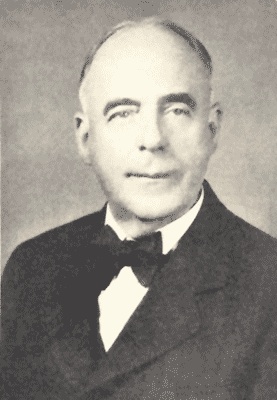
The UGA Board of Trustees passed a resolution to establish the School of Journalism after a young professor — Steadman V. Sanford — proposed the college to the Board. Professor Sanford ran the school as a one-man job. Classes were held in the Academic Building just off the Arch on Broad St.
Classes at Grady: Newspaper Reporting and Correspondence, Newspaper Editing, Special Articles, Editorial Writing, History and Principles of Journalism, Psychology of Business Procedure and Newspaper Advertising.
Women enrolled at Franklin College at UGA
First Journalism school in Missouri
On November 24, 1893, the first copy of The Red & Black came off the press after it was founded by five UGA students. The Red & Black was a part of Grady College until it went independent on May 15, 1980.
Henry W. Grady graduates from UGA in 1872
Henry W. Grady is born.
George Foster Peabody is born in Columbus, GA. After a career bank, railroad and utility investments (one would become GE), Peabody retired to dedicate his life to philanthropies and UGA. The Peabody Awards were named on appreciation for his public service including more than $250,000 in donations to UGA (equivalent of $13.2 million in today’s dollars)
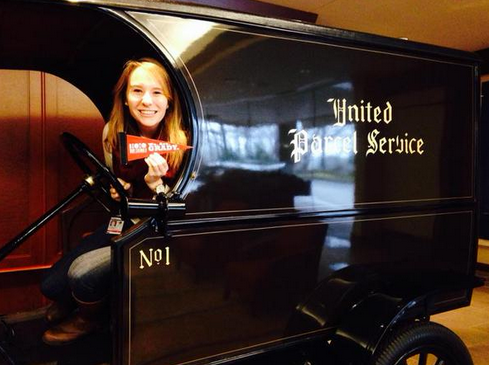
Repping @UGAGrady behind the wheel of a vintage @UPS truck
Winning the Grady Centennial logo contest is something that I’ll never forget and will always cherish. Being able to attend the Peabody Awards and meet Grady Alumni in New York was amazing! So grateful for that opportunity.
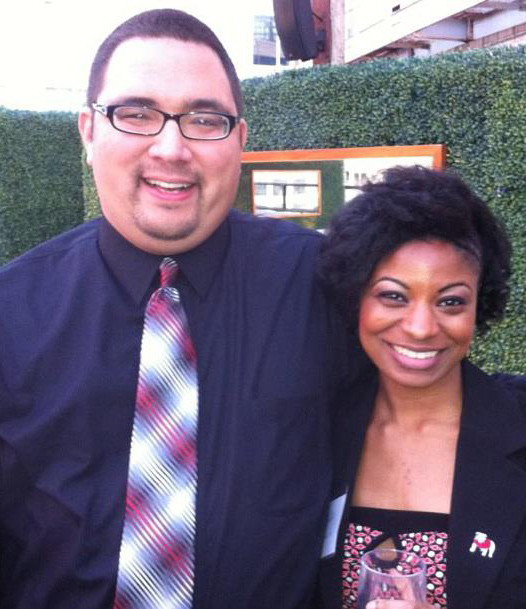
I first heard about Grady College my sophomore year of high school. One day in April of 2004, four students came to my journalism class to visit. They were older, tall, witty, and full of confidence. Immediately following, everything I did was aspirational-I wanted to be them. I wanted to know what they knew.
When someone says they bleed red and black…it’s because they came to the UGA and found home. They found people they love like family and a place that will always be open to them.
After I was accepted into the University of Georgia, no matter what classes I had during the day, I would end up in Grady’s Drewry room. It was cozy, yet always buzzing with over-caffeinated students. After I was accepted into my major at Grady, my bi-weekly visits became daily visits. It became my living room, and I became one of those over-caffeinated students.
The Drewry room is where I usually met my “aunts,” Karen Andrews and Diane Murray. They would always have an entertaining metaphor or some helpful life anecdote for me. I ate in the Drewry room a lot. I heard the “journalism is hard with no immediate rewards” speech at least ten times from Cecil Bentley. Short of making a cot behind the law bookshelf, I lived there.
As a Grady Ambassador, I followed the example of selflessness that surrounded me. Very rarely did a Grady professor send their TA to sit in for their office hours; they were there. I never heard “that’s not my job” from Grady staff when I needed help. So when it was my time to meet high school students in the Drewry room for college tours, I gave. When we were asked to put on a benefit for a local Athens charity, I gave. When we were asked to explain the Grady Facebook page to alumni, I gave and I smiled. I loved every minute that gave and I would do it all over again. Giving is a Grady tradition.
You learn AP style, you learn how to put together a news package, you can even learn how to build web pages. However, a Grady education goes beyond the fundamentals. At Grady, we do. Learning how to give all of yourself to a project, and then pick yourself back up after it’s been torn apart is the lesson that keeps on giving. This is why Grady grads win Emmy Awards and deliver groundbreaking news.
The know-how that you can’t find in textbooks is at Grady…this is what the four students that visited me that day knew. It’s what I know now. It’s what I say to anybody who listens.
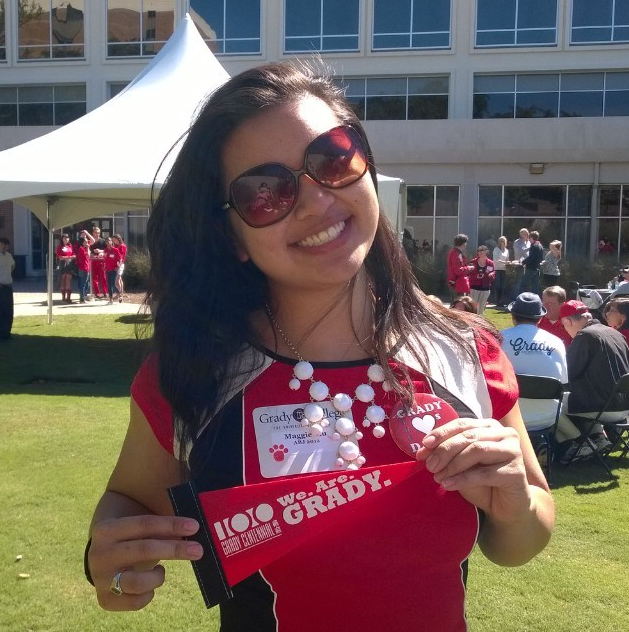
Good to be back at Grady College! #WeAreGrady #Grady100 #UGAHomecoming
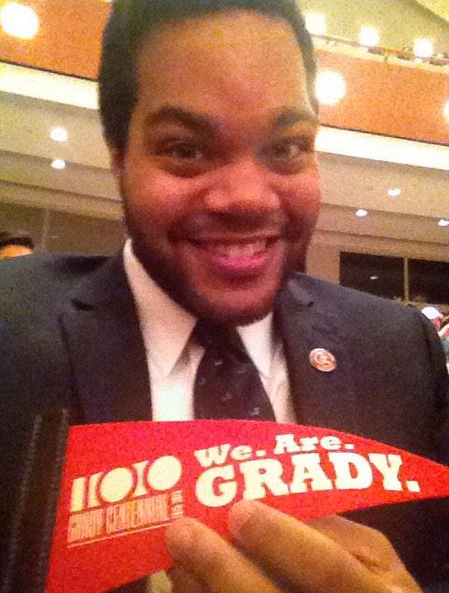
Grady Convocation Fall 2014, Hodgson Hall is the place to be! #WeAreGrady #Grady100 #UGA

#WeAreGrady
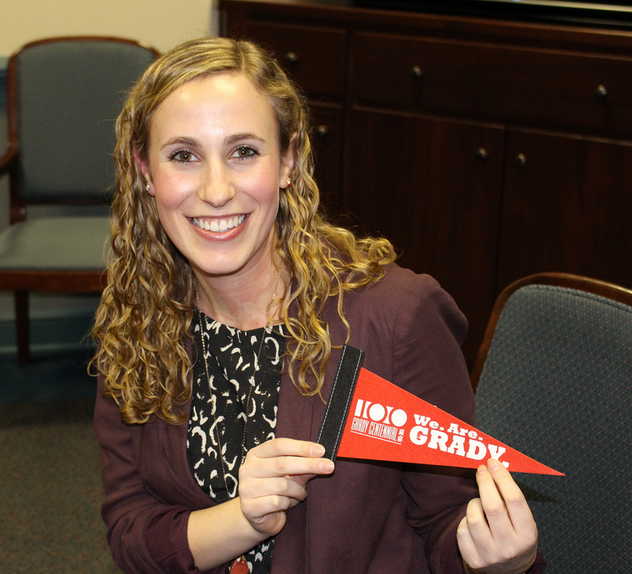
#WeAreGrady

#WeAreGrady
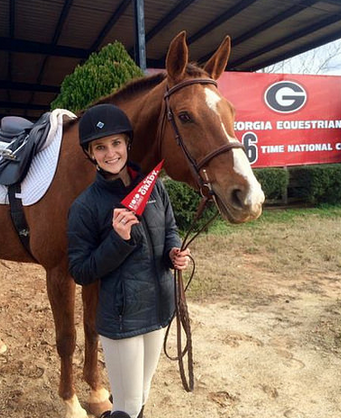
Representing @UGAGrady and @UGAEquestrian at practice with my #Grady100 centennial pennant.
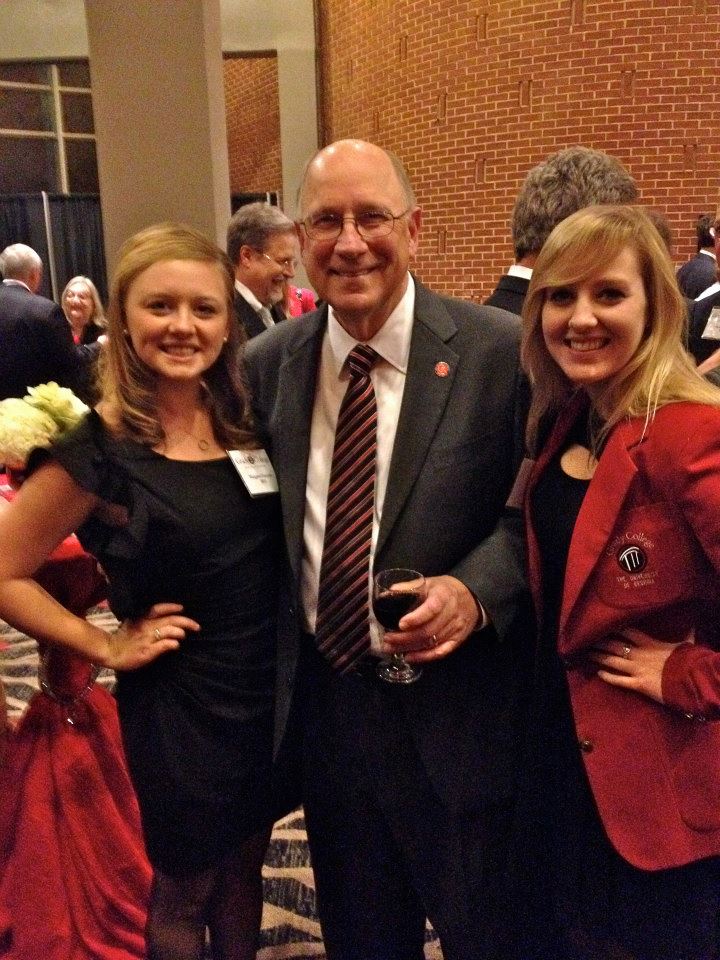
When Dean Clark welcomed us as newly admitted students to the college-I felt like I was a part of something amazing at UGA: The Grady Family
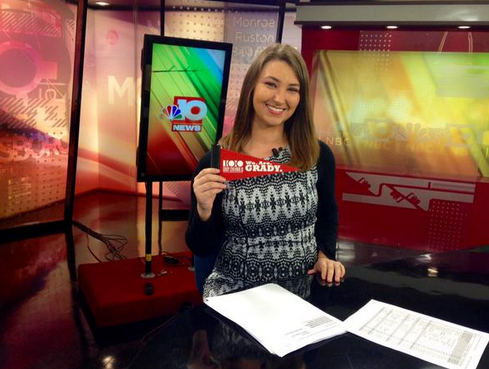
Showing my @UGAGrady pride on desk for @MyArkLaMiss
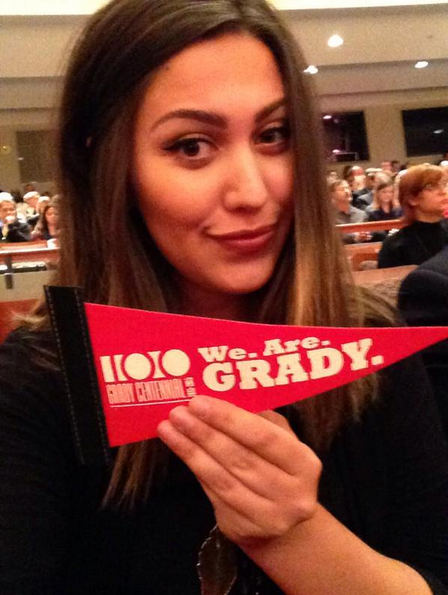
Grady College Fall 2014 Convocation
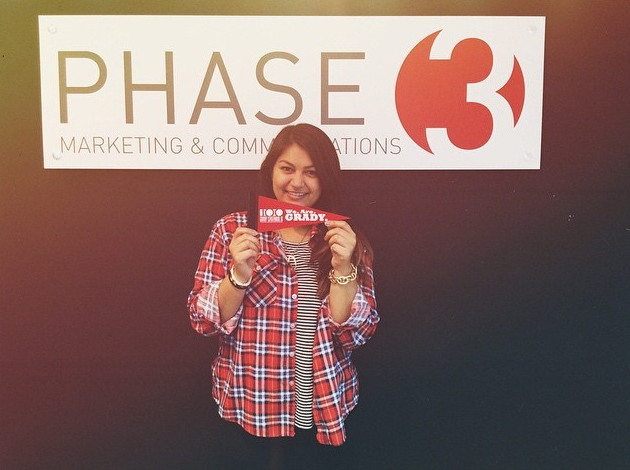
Oh the places you’ll go
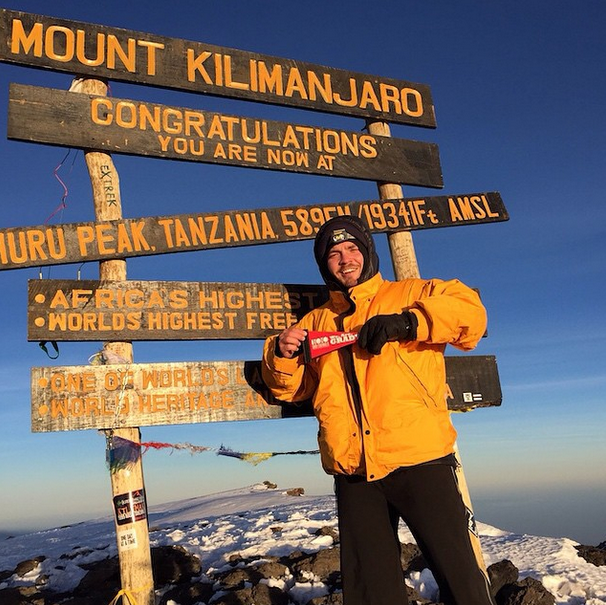
Going to great heights to show #WeAreGrady pride.
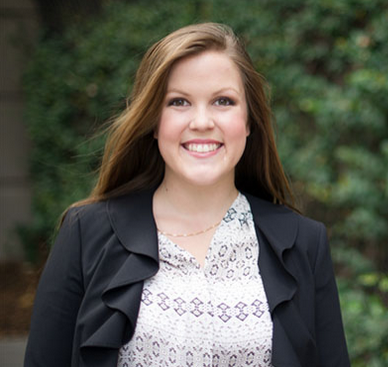
As a student-athlete in college, I often feared that I would not have enough time to prepare for my future. Most of my classmates had at least two to four internships under their belts by senior year and there I was worried about making it to the barn or workouts on time. Professors understood that I had outside commitments, but I wanted to leave college knowing that I had played a role in the powerhouse that is Grady.
It took me until my last semester of college to take advantage of the endless opportunities available for AdPR students, outside of PRSSA and AdPR Connection. With only 9 hours left of non-Grady electives, I applied for the position of a Yarbrough-Grady intern. This position allowed me to represent the Grady brand through writing, design and collaboration with faculty and staff members.
Since graduation in May of 2014, Grady has followed me everywhere. Just the other day at work I laughed to myself when I was asked to code social media posts. A coworker immediately knew why I was laughing and asked if I had PR research with Sweetser. A few days later a group of young Grady hopefuls toured the office, bright eyed and ready to take on the world. Their ambition made me realize how unique the Grady College is. I may be biased, but I cannot think of another college that pushes its students to follow their ambitions and take on the world with such a strong sense of self-motivation. If Grady offers its students amazing growth opportunities now, I can only imagine what’s to come in the future!
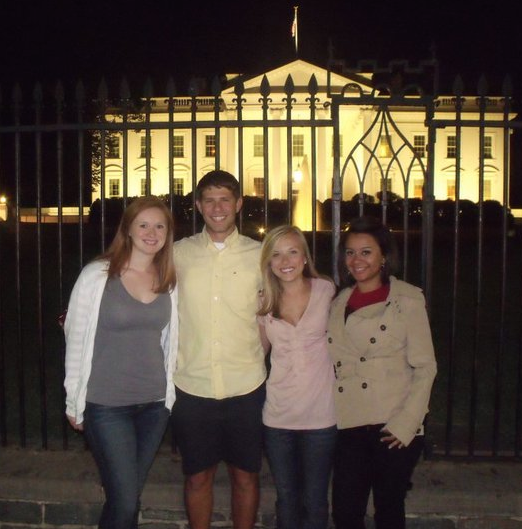
The relationships I made as a public relations major at Grady will last forever. My professors and the fellow students in my classes became more than just acquaintances during my tenure – they became my friends. Ask anyone if they had a teacher who was more like a second mom or dad. I can assure you, most would say yes. For me, that teacher was Dr. Betty Jones. She helped me grow from just a shy PR student into who I am today – an outgoing, optimistic, hard-working PR professional. She saw my potential and helped guide me in the right direction, not just as a mentor but also as a friend.
With Dr. Jones’ guidance, I got involved with the Drewry Chapter of the Public Relations Student Society of America (PRSSA), ran for office, served as President and made lifelong connections through my experiences.
Now, after three and a half years, there is one fact that remains – the connections I made during my time at Grady are as strong as ever. As the Chairman of the Grady Young Alumni Council, it is exciting to see how Grady continues to change the lives of its students and the continued growth of the Grady family.
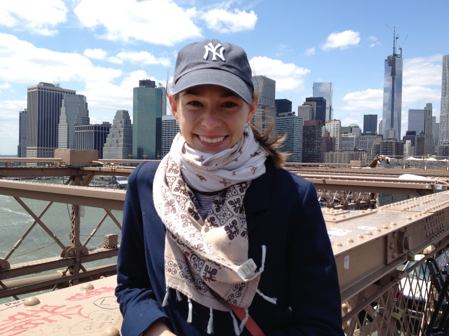
My best memories from my time at the University of Georgia are almost all connected to Grady College. It gave me a sense of purpose and pride to call myself a ‘tele kid’. I walked into the double doors of Grady’s basement and knew that my day would be filled with scripting, edit sessions, and field shoots. In the thick of all of it, I distinctly remember thinking to myself, ‘this isn’t work. This is fun.’
I owe a debt to Grady for giving me this sense of excitement for video production work. Years later – and hundreds of projects behind me – I still rely on the foundation of knowledge that my professors provided. I look at things differently now because of their insights. Even though I haven’t attended any lectures for a while now, bits of wisdom like ‘always kill your babies’ somehow still float to the forefront of my mind when needed I’m grateful for this, despite how strange it sounds to an outsider…
A sense of excitement for Journalism, a foundation of skills and information to draw from always, and a gang of people that have your back; what else could you ask from your alma mater?
The ONE time I received praise from Conrad Fink after writing a piece in the Red & Black- hearing his voice read my words was such an honor.

The Grady College is the first place that truly felt like home for me in Georgia. My folks moved us down here from northern Virginia when I was 10 years old. I never really felt like I fit in and was determined to get the heck out of Georgia. Then I heard about UGA’s journalism program. When I was 16, my high school newspaper advisor told me about a week-long summer program at UGA called the Georgia Journalism Academy. The first time I set foot at Grady, I knew this was where I was meant to be.
I’m so excited to celebrate Grady’s 100th birthday. The Grady College changed my life in the most profound ways. I made some of my best friends here, and continue to make amazing connections as an alumni. For everything that Grady’s given me – my career, my network, my mentors and friends – the least I can do is put on a party dress, sip champagne, and toast to 100 years of our amazing college. I would love to see you in Athens with us on Centennial Weekend – get your tickets here to come party!

At this celebratory moment, I remember words Dean Charles Davis once shared: “Young alumni are the lifeblood of the College… the next generation of leadership that will move the institution forward. It’s more important than ever for you to be involved.” I agree with Dean Davis and moreover, what better time than our Centennial to recommit ourselves to Grady?
In the spirit of celebration, I offer three ways I plan to get reconnect and re-engage with Grady this year:
1 – Find my Grady community. Grady is everywhere! After moving from Georgia to NYC this year, I’m making a point to connect with the Grady grad network through NYC alumni activities.
2 – Stop. Look. And say yes. I admit: when things get hectic, I fall behind on communications from our college. But when you pay attention, you’ll find that Grady is calling out to us in many different ways. Starting this year, I’m committing to staying informed about Grady activities and seeing how I can help!
3 – Pay it forward. At Grady, I’ve been afforded several opportunities – large and small – that made an impact in my educational journey. To pay it forward, I’ll be looking for ways I can give my time and resources back to the Grady student community to help make a difference.
To other young Grady alumni, I hope you’ll also ask yourself in what ways you’ll recommit to Grady this year. Let’s celebrate this milestone in exciting new ways to come together as a family once again!
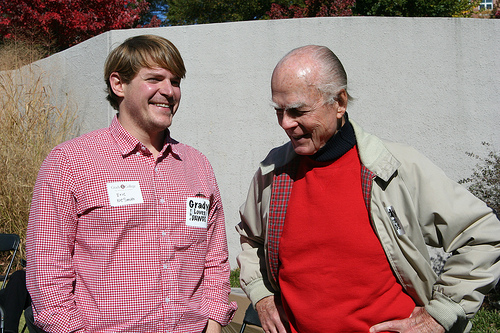
Perhaps the greatest benefit to being an alum is the clarity of 20-20 hindsight vision. I would like to think as a UGA undergrad I cherished every moment and didn’t miss a beat, but the likelihood of that is pretty slim. I can say the exception to this was every class I took at Grady with Professor Conrad Fink. Over his 28-year teaching career, he led a legion of students to the light of what good journalism is really all about.
Something about this professor made you want to remember everything. Maybe it was those impeding eyebrows, that piercing gaze or the precision with which he deconstructed my papers, but as a 35-year-old Grady College alum, I now have the luxury of looking back and culling through those many memories and experiences under his tutelage. I’m acutely aware that those experiences made me who I am today. One memory in particular stands out above the many others.
It was my first semester in the Grady College. It was also my first semester in one of Professor Fink’s classes. When I received my first paper back, there was no grade at the top – only the words “See me” scrawled in red. The rest of the pages were left dripping with ink of that same color. On the third page in the margin, I noticed yet another red note. “NeSmith, take this sentence around the barn and shoot it.” That was the moment I realized average work was never going to be good enough. When I finally gathered my courage to go and see him, yes, I was chastised, but he also walked me through what I had done wrong and set me on a new course.
I had the privilege of taking all the classes Professor Fink taught at Grady. He led by example, with the reenforcement of experience. He didn’t ask students for their best. He expected it. He didn’t push. He squeezed. When he saw talent, he pounced, demanding nothing short of perfection. But when he said your writing was good, you knew without a doubt that indeed it was worth printing. He saw more in me than I did in myself and accepted nothing less than my best work. I have that moment of realization, among many other experiences at Grady, to thank for much of my success.
The news package was totally done. It was ready to submit for Newsource the next day. But I could feel that something was just a little bit off… My classmate had no idea why I was still sitting in the cramped editing bay with the speakers turned up. I had to watch it again.
Finally I realized what was bothering me. The anchor was using a computer, but the noises of the mouse clicks didn’t line up with she was actually doing on the computer. One I discovered this was the issue, I had another problem. I didn’t know how to fine-tune audio in a timeline yet.
So that’s when I first learned the minutiae of editing audio. I spent the next 15 minutes aligning two mouse clicks and warding off a classmate who assured me it would be fine without the fix. This task that would take me 15 seconds today.
The news package got an A+ grade. I’m guessing it would’ve still scored high without the clicks, but I sure felt a lot better about it.

Displaying a little Grady pride after a hard day’s work…
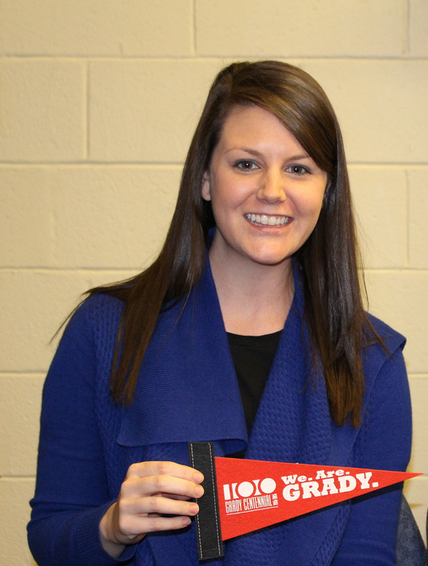
#WeAreGrady
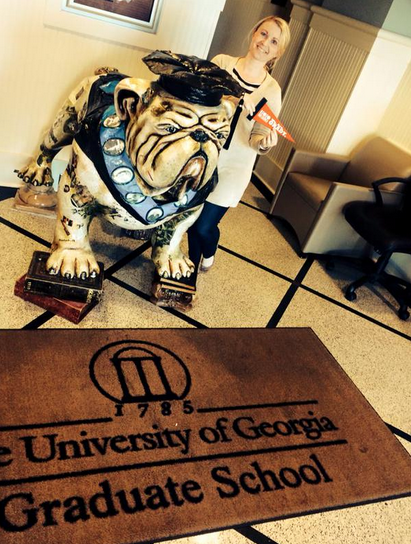
Celebrating Grady Centennial! #WeAreGrady #Grady100

Everyone hopes to find that one teacher: a John Keating of “Dead Poets Society” who sees something in you and decidedly makes an investment. It’s the professor who serves as a mentor, a model, the one who cares more about the person than the test score—ultimately the one who inspires.
At twenty years old I didn’t know that person was David Hazinski. A large Polish American and former network war correspondent, Hazinski was gruff and loud, and wore his large block initials emblazoned on his shirts and even his ring finger (this was before monograms were all the southern rage).
Hazinski was, in a word, intimidating.
In preparation for the first midterm of my broadcast news class, we were tasked with creating a rundown for a fictional newscast. Not for next week. Not even for tomorrow. This would be timed and it struck fear in the hearts of us young aspiring journalists. Soon we were all asking various “what ifs?” What if our computers die? What if we can’t access the AP Wire? What if the printers break?
Hazinski’s response: “I don’t care if you have to write it in blood. You will turn it in on time or you will fail.”
Setting expectations was never an issue.
As time went on, Hazinski upped our deadline pressures. He would clamor around the newsroom 20 minutes before show, crash metal trashcan lids together, flicker lights on and off and sing repeated renditions of “Row, Row, Row Your Boat.”
These stories may sound ridiculous—to the point of torture—but in reality these were acts of kindness. In the world of broadcast television, you live and die by multiple deadlines and if you can’t think under pressure, you won’t make it.
But his teaching doesn’t end with the diploma. Hazinski has always been willing to review demo tapes (yes, mine were VHS back then). He has assisted me in the complicated realm of television contracts and even weighed in on how to navigate difficult dynamics in the work place.
When I decided to transition from a newsroom into corporate communications, I was nervous to tell him. But he was the first to celebrate my move and embrace the new model of storytelling and news. He, of course, found a way to integrate his students into what I was doing with brand publishing.
Throughout my career, he’s introduced me to some of my best friends, mentors and eventual colleagues. He’s practically family, having trained both my sister and me. So many doors have opened for me because of the network of NewSourcers he’s maintained.
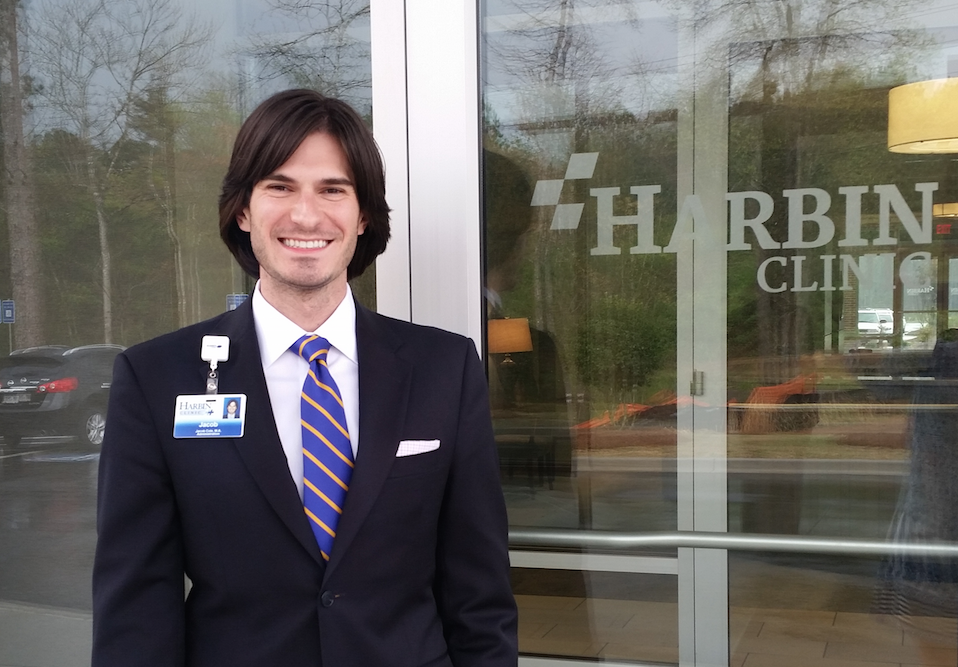
In August of 2012, I found myself on a second round interview sitting in front of the chief operations officer of the Harbin Clinic, the largest physician owned multi-specialty group in Georgia. Fully staffing two 300-bed hospitals with specialists, and supporting two others, this opportunity was a big deal, especially for a guy looking to make a career as a healthcare executive.
The third and final round, as the COO explained to me, was giving a presentation of any topic of my choosing to a group of executives, directors and practice managers. What an opportunity! What a dilemma. Should I play it safe talk about something healthcare related? Or maybe talk about my thoughts on customer service? One thing that was for sure was that I wanted this job. As I mentally sized up the other final round candidates that I knew nothing about, I was fairly certain that I was the only one with an M.A. from the Grady College, and that was an asset that I wanted to show off.
Healthcare administration is a relatively conservative field, so I embraced the notion of “go big or go home” and decided to present my semester-long research project entitled “Where have all the cowboys gone?” from one of my most unusual and most cherished classes from my time in grad school. The class was on critical culture studies, and it was taught by Dr. Andy Kavoori. It was radically different from any class that I had ever taken, and it really helped me to examine and understand the world around me in a totally new way. My paper was on the hypersexualization and feminization of males in American media—not exactly your typical watercooler topic of conversation—but I landed the job!
Grady tends to do that for you; give you a new perspective on the world around you and a clear way to communicate it to others. The college is known for churning out leaders, and the skills that you learn in Grady – the fair representation of ideas, good writing skills, clear and effective communication – are skills that are not just valuable in the fields of journalism and mass communication; they’re valuable in every field. No matter what career situation I’m walking into, being a Grady grad is the secret weapon in my back pocket. I wouldn’t be the person I am today if it weren’t for the people of Grady that decided to invest in me, and I couldn’t be more thrilled to celebrate 100 years of developing Democracy’s Next Generation.
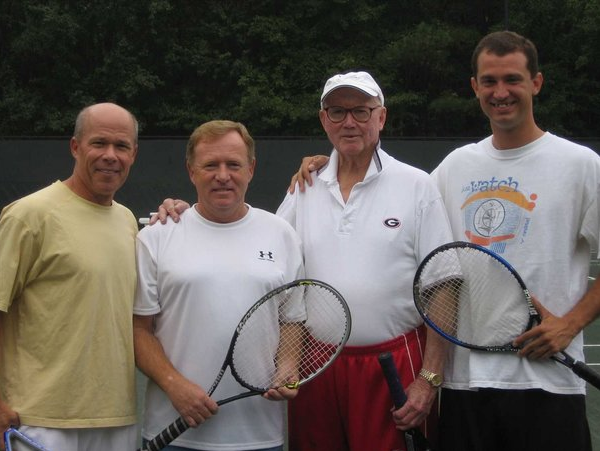
I had the honor of playing tennis with Dan Magill (ABJ ’42). He also gave me a tour of The Intercollegiate Tennis Association (ITA) and shared with me some of his great experiences coaching the UGA Men’s tennis team and also being part of the Athens Banner-Herald, where I had my first job as a recent Grady grad. Being able to talk to, share with and play alongside him was truly an honor! Something I’ll never forget. He was truly a walking encyclopedia.
“Coach Magill represents the essence of Grady College and of the University of Georgia,” commented Charles Davis, dean of Grady College. “He is the greatest Bulldog of them all, and always will be.” Note: I’m the first one from the left. Thanks!
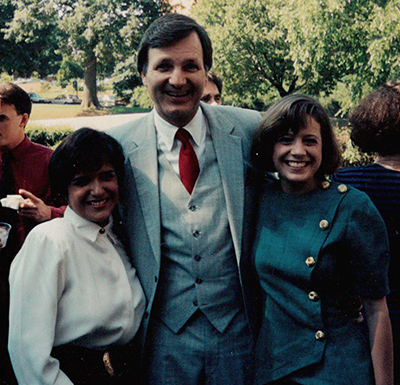
Dorrie Johnson Love, Professor David Hazinski and Susan McClure at end of the year gathering in 1991.

I surprised Dean Russell by taking a selfie during the Grady convocation in 1995.
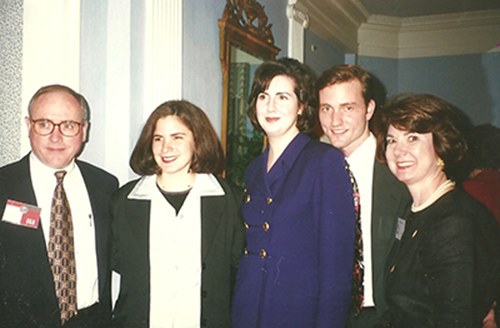
1996 Peabody Awards: Dean Tom Russell, Robin Hommel, Cynthia Harris, Brent Hyams and Ruhanna Neal

@UGAGrady pennant waving today at @Soundbyte_Inc for a VO session.
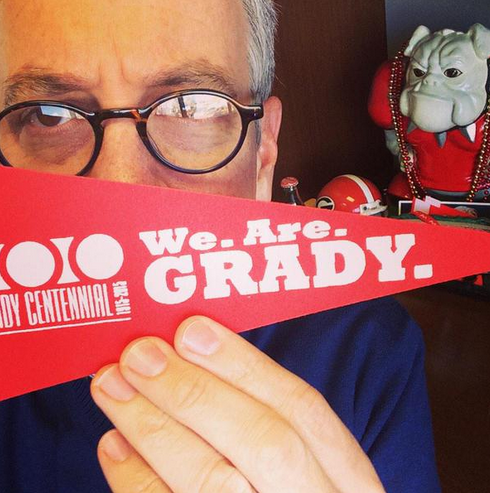
Reppin’ @UGAGrady like a BOSS @CocaCola #WeAreGrady #Grady100
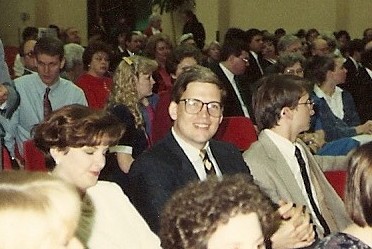
I was a transfer student from Georgia Southern determined to finish my degree from the University of Ga. I rolled into Athens the last days of 1989 that December looking for a place to live. I subleased a room in the international household of Dr. Malcom and Mrs. Janet Reid. Dr. Reid was an internationally renown professor of Poultry Pathology and he and his wife were staunch Presbyterians and enthusiastically engaged in missions and the international Presbyterian Church as well as the International Community at UGA. The couple had met as Fulbright Scholars when they were college students in the Middle East. That summer before World War II they and dozens of other college students had camped upon a slow moving barge across the Mediterranean for a summer in Europe. I believe all 5 of their children were born in Cairo, Egypt.
I learned a great deal at the Grady School. Mr. Conrad Fink was my most memorable professor. He was a retired Associated Press vice president in New York City and Vietnam War correspondent. I learned just as much if not more in the Reid household. My roommates were Binn Ann from Beijing, China. Suleiman Ahmed from Damascus, Syria. Marius Issacson from Capetown, South Africa and Fernando Fernandez from Venezuela among other visiting international students and professors. I was Special Projects Coordinator at the Red and Black Newspaper and a Demosthenian. I also worked at Goldkist as a part time student worker with Jerod Tanner also a UGA student.

Grad school with Scott Shamp and Hypercard. Basketball with Barry Sherman. Next door neighbor Danny Sniff. Scott Williamson, Kevin Seidel, Mark Fisher, Ford Risley #Grady100
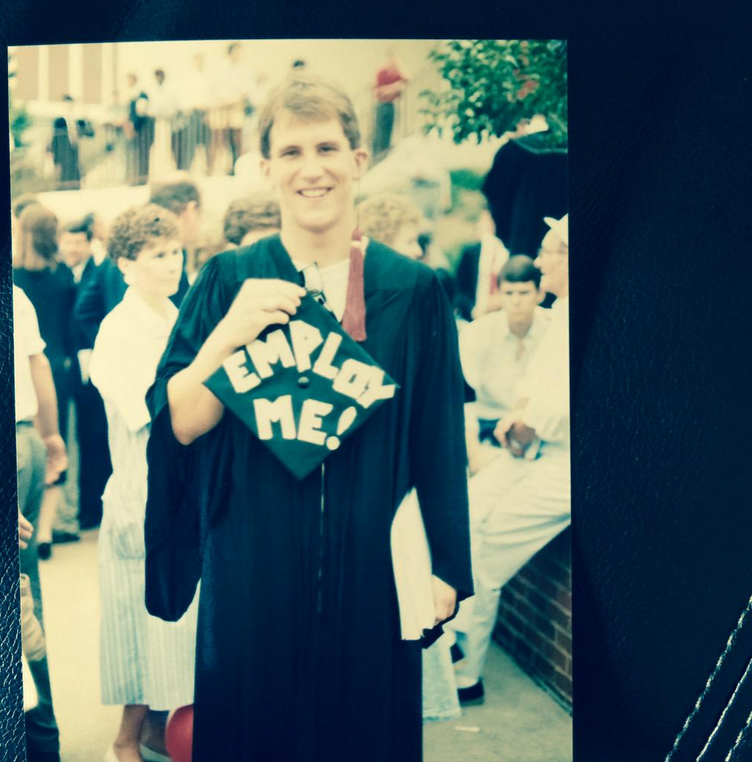
Me, on @UGAGrady graduation day in June 1990. Great education @universityofga got me where I am today! #GoDawgs #TBT
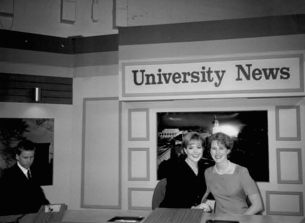
Laura (Robertson) Cushing and Amy Nelson in the University News studio in 1997.
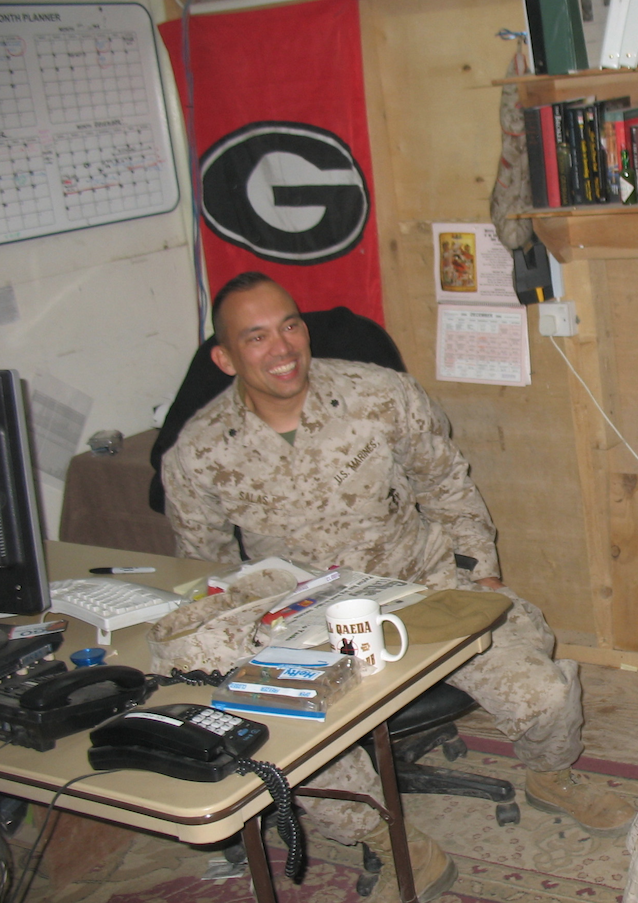
LtCol Bryan Salas (ABJ ’97) serves as the senior spokesman for all Marine Forces in Iraq in 2006.
Our Grady College Student Advertising Campaign competition team led by Professors Jim Frost and Ron Lane won the National Championship in Washington DC.
During my senior year I had the opportunity to take the course that all public relations students live for — Public Relations Campaigns. The best part was that we had the opportunity to work with Ruthann Weaver Lariscy. She was a fantastic teacher, and I remember being so awed by her ability and knowledge. I remember my three person group and the effort that two of us really put into the project. And I remember the pride I felt with Dr. Lariscy told us that we had done a good job. It meant so much to me. One of my own best moments was being able to return to UGA as a professor and reconnect with Dr. Lariscy as a peer. Certainly much less stress, but I still feel honored when she says good things about my work (even though it is in a different discipline.)
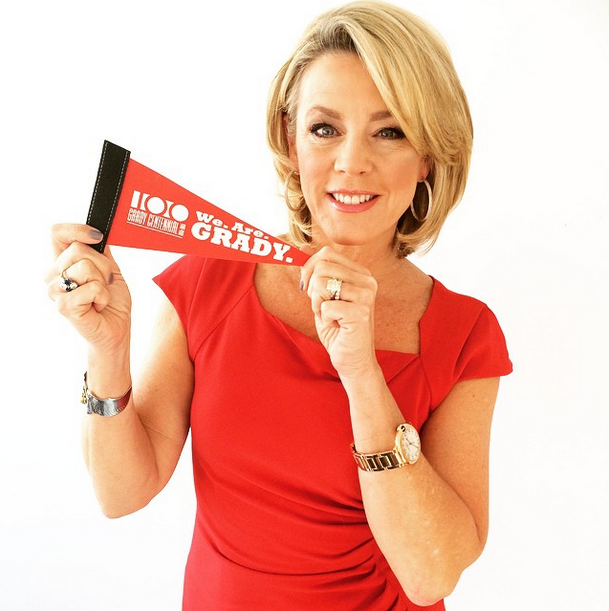
Go Dawgs!

Grady College turns 100 this year! Outstanding!
At Warner Robins High School, Warner Robins, Ga., I had been the editor of both the yearbook and the newspaper, and particularly enjoyed writing. So, once I was accepted to the University of Georgia, I enrolled in the journalism school. This was at a time when you could simply do that – declare you were in with no particular requirements to meet. That’s my kind of admissions policy.
In the fall quarter of my freshman year, I was fortunate enough to have, for what I believe was the last such class he taught, Dean John Drewry for Journalism 101. This was in the Commerce-Journalism lecture hall, featuring Drewry’s marvelous Southern accent and impeccable storytelling and delivery, honed over decades of teaching this course.
My memories of the Grady School perk up in my junior year. Two new professors, Wallace Eberhard and John English, both with newly minted University of Wisconsin Ph.D.s, began what became their long and illustrious careers at Grady. Both were memorable professors, as was Al Hester, a former city editor of The Dallas Times Herald who arrived at Grady the same year.
My time on The Red and Black, then housed in the Grady School, was by far my most rewarding experience at Georgia. With great enthusiasm, a group of us often worked far into the night – on deadline using our now-anachronistic manual typewriters and rotary phones.
Although our grades sometimes suffered, we were putting into practice much of what we learned in the classroom while at the same time acquiring skills and knowledge that can only be learned by actually practicing a craft.
That enthusiasm and those skills and knowledge served many of us well in the years to come. Plus, it was a lot of fun. I look back on The Red and Black, and the Grady School (now Grady College), with great fondness.
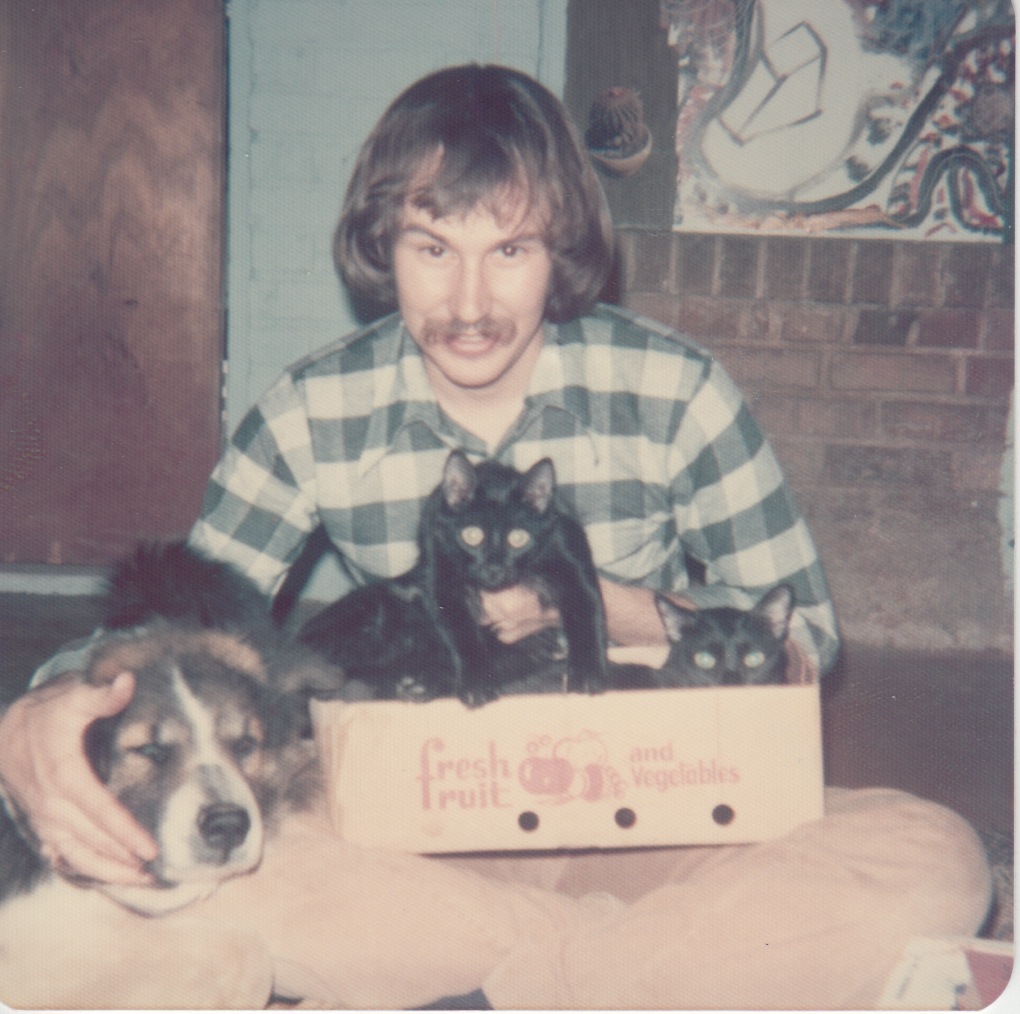
Television and film were in the dark ages when I was in the Grady College, but I still learned so much about being part of a team and about how stories are crafted and created. I became a better reporter, a better writer, and a more informed human being in the time I spent studying journalism at UGA. And I remember with great pleasure studying with Worth McDougald and Larry Aldridge, among so many great professors. What a trip it was!
Top of mind today about getting a master’s degree at Grady are:
–theoretical discussions with Dr. Stuart Surlin, my major professor;
–typography courses in UGA’s art department with Ronald Arnholm (he’s the best);
–staff member of WUOG from 1973 to 1977 because of the incredible creative energy all around;
–reporter for The Winder News (got a judge reprimanded by state judicial qualifications committee);
–typographic and design assistant at the University of Georgia Press working with Martyn Hitchcock.
I blame any errors in the above on social media.
My story begins June 5, 1973, the day I went to work at the Grady College, known then as the J School. I worked in the Business & Placement Office. My boss, Mr. Bob Crow (or Col. Crow), was the Assistant to the Dean under Dean Agee. We had Dean Drewry stopping in each morning to greet us and perhaps give us a few words of wisdom! We then worked under Dean Cutlip and Dr. Tom Russell, Associate Dean, later Dean. We spent most of our time helping students get jobs (which was SO rewarding) and conducting the day-to-day business of “running the College.” As the Business Office, we took care of ordering equipment and supplies, etc. for the student classes, checking out cameras to selling film, along with the wonderful help of our work-study students! We handled the finances for the College from paying the faculty and staff to sending out memos that if we did not reduce our phone bills we would not have enough money for faculty to travel to their conferences. That would get their attention and some faculty would not speak to us for weeks! We also helped run the Peabody Awards Program–that was the ‘perk’ of the job–going to NYC and staying at The Waldorf! I have so many stories with Dr. McDougald & Dr. Barry Sherman, the Directors of the Awards at that time (later Horace Newcomb), that I’m seriously thinking of writing a book (Thirty Years With Peabody)!! How many other UGA staff have eaten lunch with Dan Rather, Barbara Walters, Tom Brokaw, Diane Sawyer, Peter Jennings, Paul Harvey, Charlayne Hunter-Gault, Jon Stewart (love that man) Stephen Colbert, Patrick Stewart, Ed Bradley, Jody & Sally Danneman, Earl Leonard, Scott Williamson, the Governors of Georgia, UGA Presidents & other UGA Staff, the NYPD……….I am so privileged to have worked with so many GREAT staff, students, faculty, potential Grady employers, and friends of the UGA Grady College. From 1981 until 1995 I had my second boss, H. Glenn Patterson. He was wonderful but not everyone felt the same way… With two tours in Vietnam he could, at times, be difficult. However, Dean Russell and I couldn’t have made it without him. Dean Russell is.one of the smartest people I have ever known. Who helped make him a great person–Judy, of course! The same can be said of Barry Sherman, who left us hanging in 2000 but Lou Benjamin took the reigns….Candy, we love you & your family!! One of the hardest decisions I had to make was to “bow out” in 2003. GO GRADY! GO DAWGS!
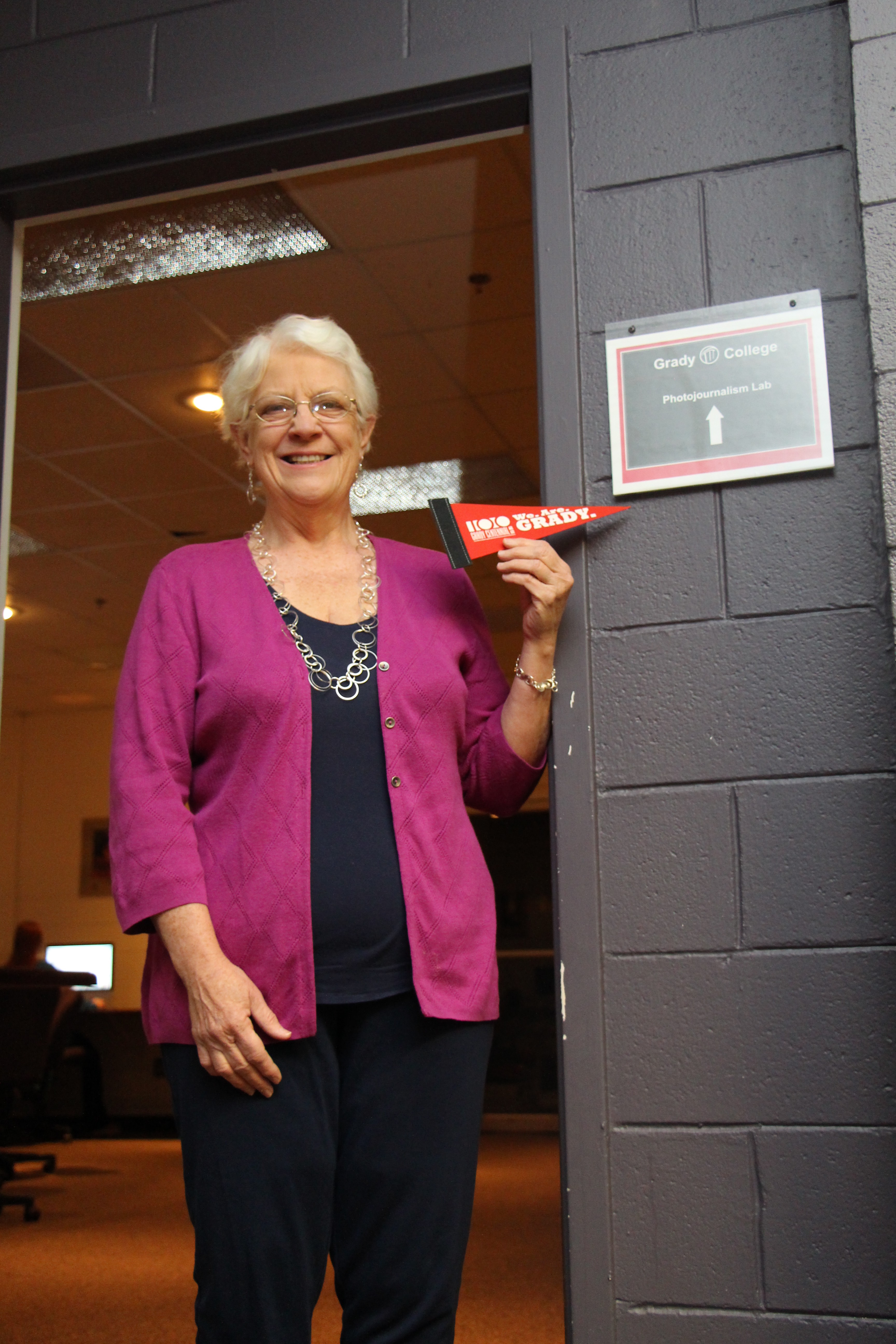
As a sports writer for the Red and Black, I covered women’s field hockey, synchronized swimming and women’s riflery.
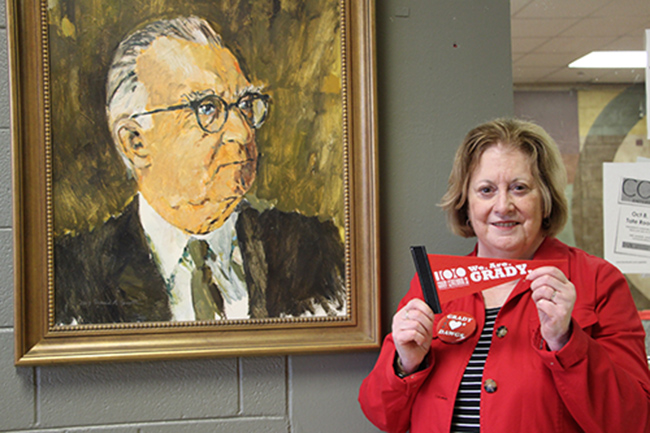
“Clueless” is the word that comes to mind when I recall the 18-year-old me who arrived in Athens with a manual typewriter and a firm but unfocused notion that I wanted to write, and set out to major in journalism.
In retrospect, it seems likely others shared that clueless feeling; but back then I was sure that some crucial set of instructions had been left out of my registration packet.
At the time, admission to Grady consisted of checking the appropriate box on a form — no rigorous selection process involved — and signing up for classes. So I happily enrolled myself in Dean John Drewry’s Journalism 101 and determined to work on the Red & Black, then under the auspices of the J-school.
My roommate and I showed up in tandem at the newspaper office, in the catacombs of the old C-J building, uncertain of how to sign up. We charged into an editorial meeting and my friend announced loudly, “Hi, we’re freshmen.” I imagined — and I am sure I wasn’t wrong — a roomful of people saying to themselves: “No kidding.”
Nonetheless, we were welcomed and put to work.
I was treated like a serious professional. The only discouraging word came from an English professor who told me I was wasting my time in journalism classes since I could pick up whatever I needed to know “in any print shop.” I realized at the time she was wrong — but was still too much of a nice girl from Decatur to say so. And was she ever wrong.
I liked my Grady classmates and colleagues a lot — they were smart, funny, encouraging, and interesting. (And after all these years, I still find journalists the best possible company for just about any occasion. They get the jokes. I even married a journalist.)
I enjoyed the work – the reporting and the writing and, perversely, the deadlines – occasionally coming in just under the wire, but meeting them — and the sense of accomplishment when an assignment was completed.
I found myself thinking like a journalist and beginning to feel like one. And, when I graduated, I was a journalist. Still am, and proud of it. Thanks, Grady.
In the best Southern tradition , I wanted to be a writer, but rather than starve, I decided to go into advertising and public relations. Journalism 101 taught by Dean Drewry was my first J class as a freshman. Day one, he asked how many columns were on the building holding the classroom? No one answered correctly. Object lesson – a good reporter is observant. I remember his wife used to pick him up at lunch time every day in a Pontiac sedan. (There was some gossip about why, but I shan’t repeat it.) I relished my journalism classes with Frazier Moore and other outstanding professors. After the Air Force (ROTC) and graduate school at Syracuse U. , I landed a job on Madison Avenue (Cunningham and Walsh, Ad Agency – think Mad Men) and later as a client (CPC International, Nabisco, and Kraft Foods). Was I a writer? Nope – media all the way. When I started there were three networks and something called “cable.” Now… well you know the story.
To celebrate our centennial, we’re gathering all the memories that make us Grady. Submit your stories and favorite memories here and check back soon to view them live on the site.